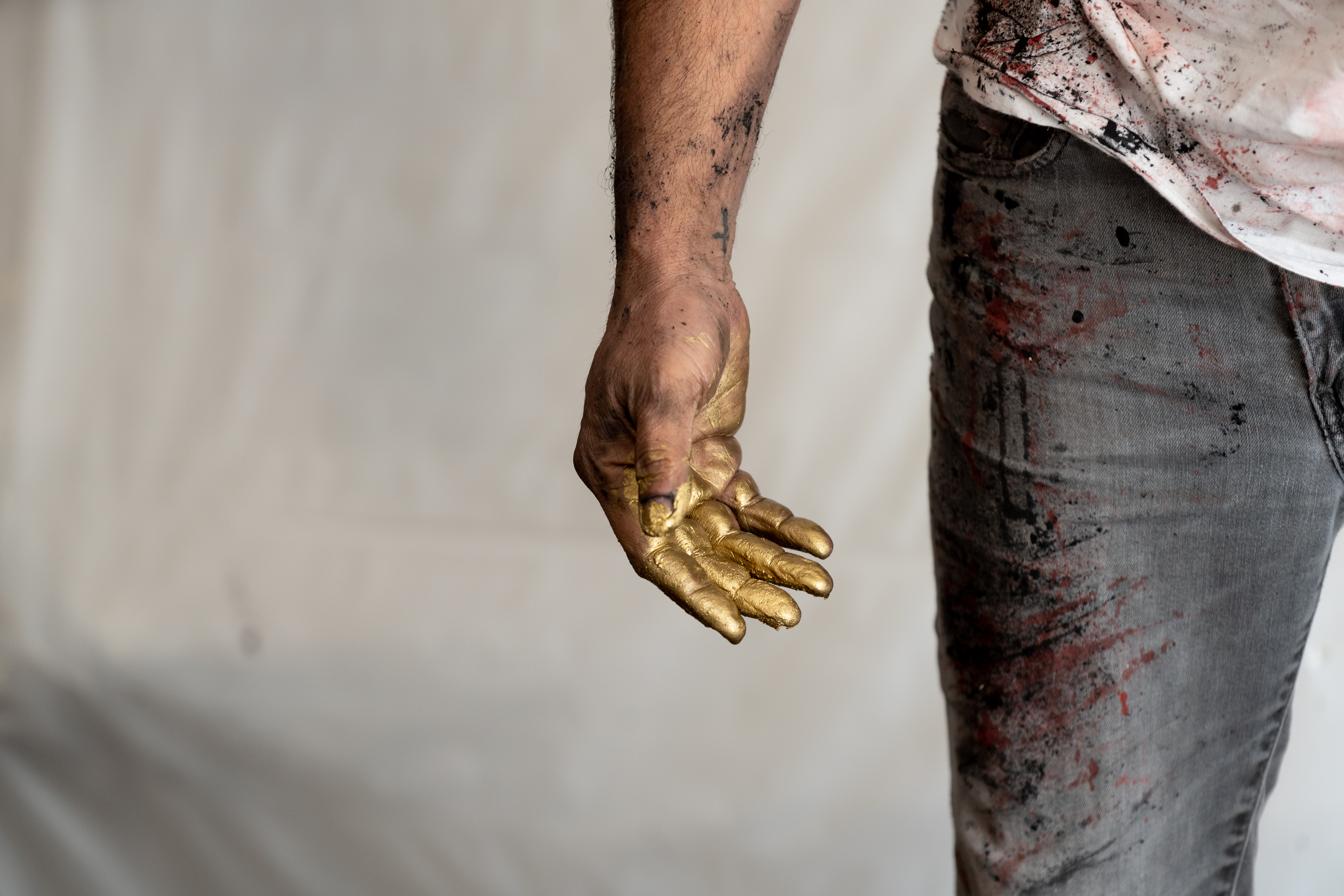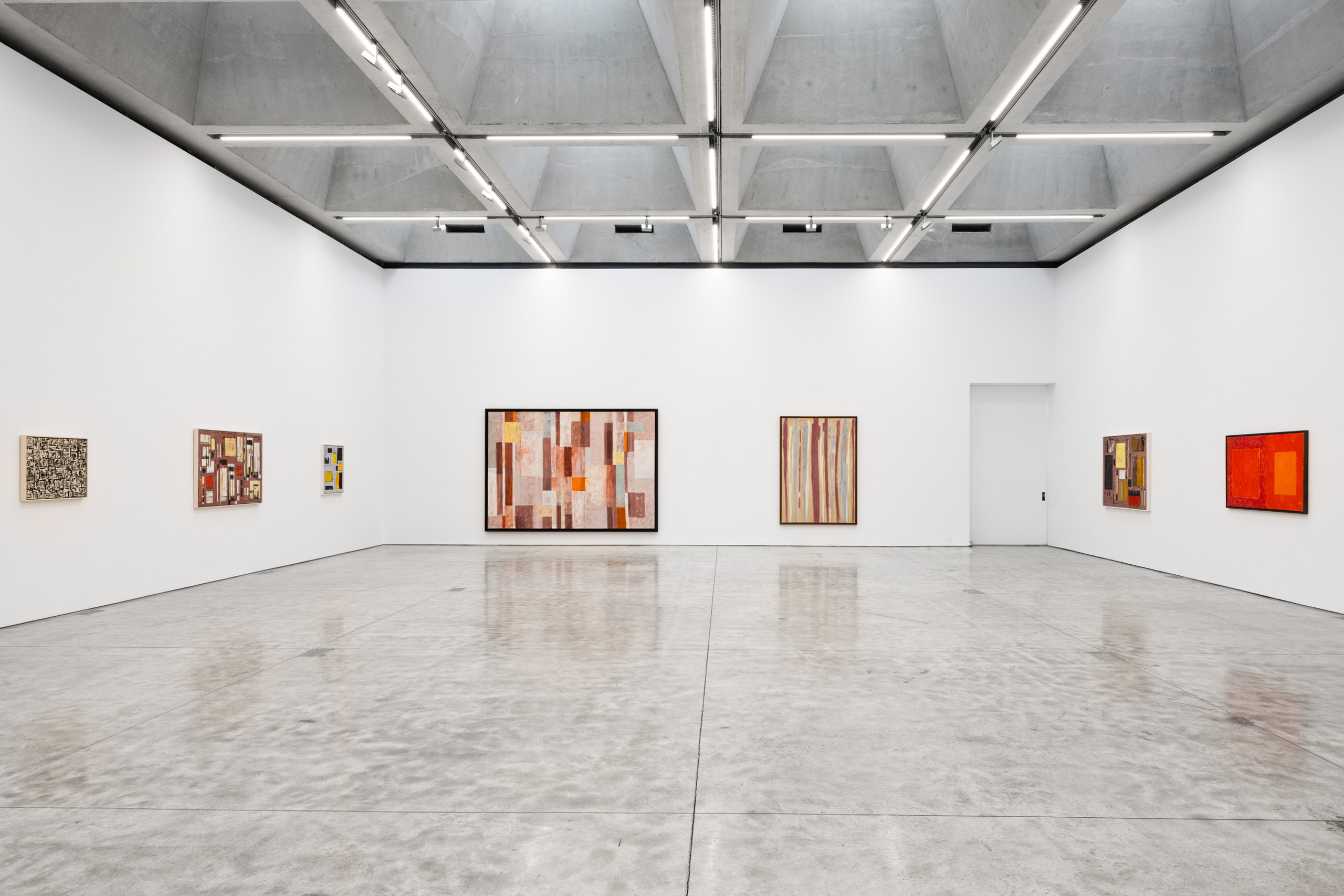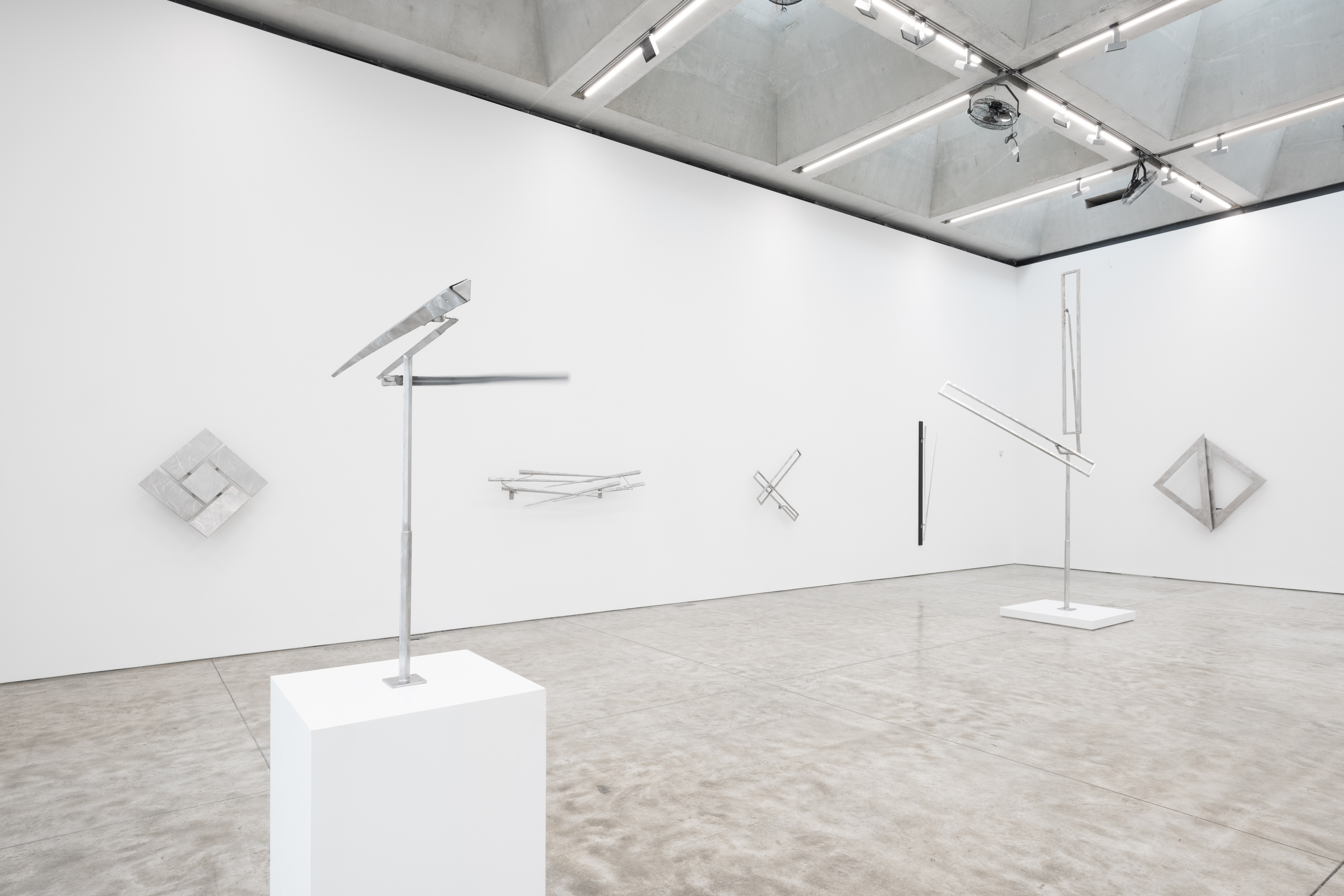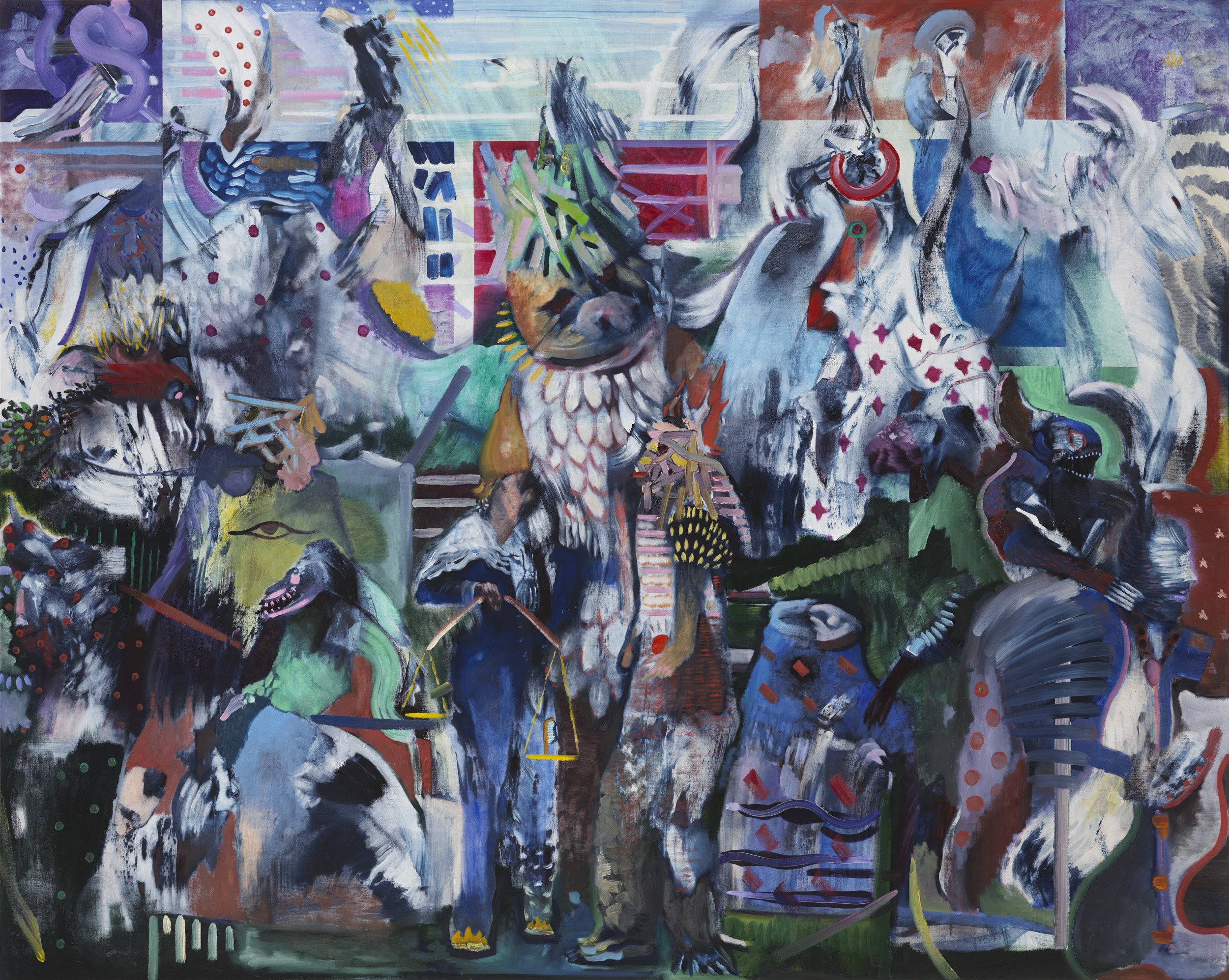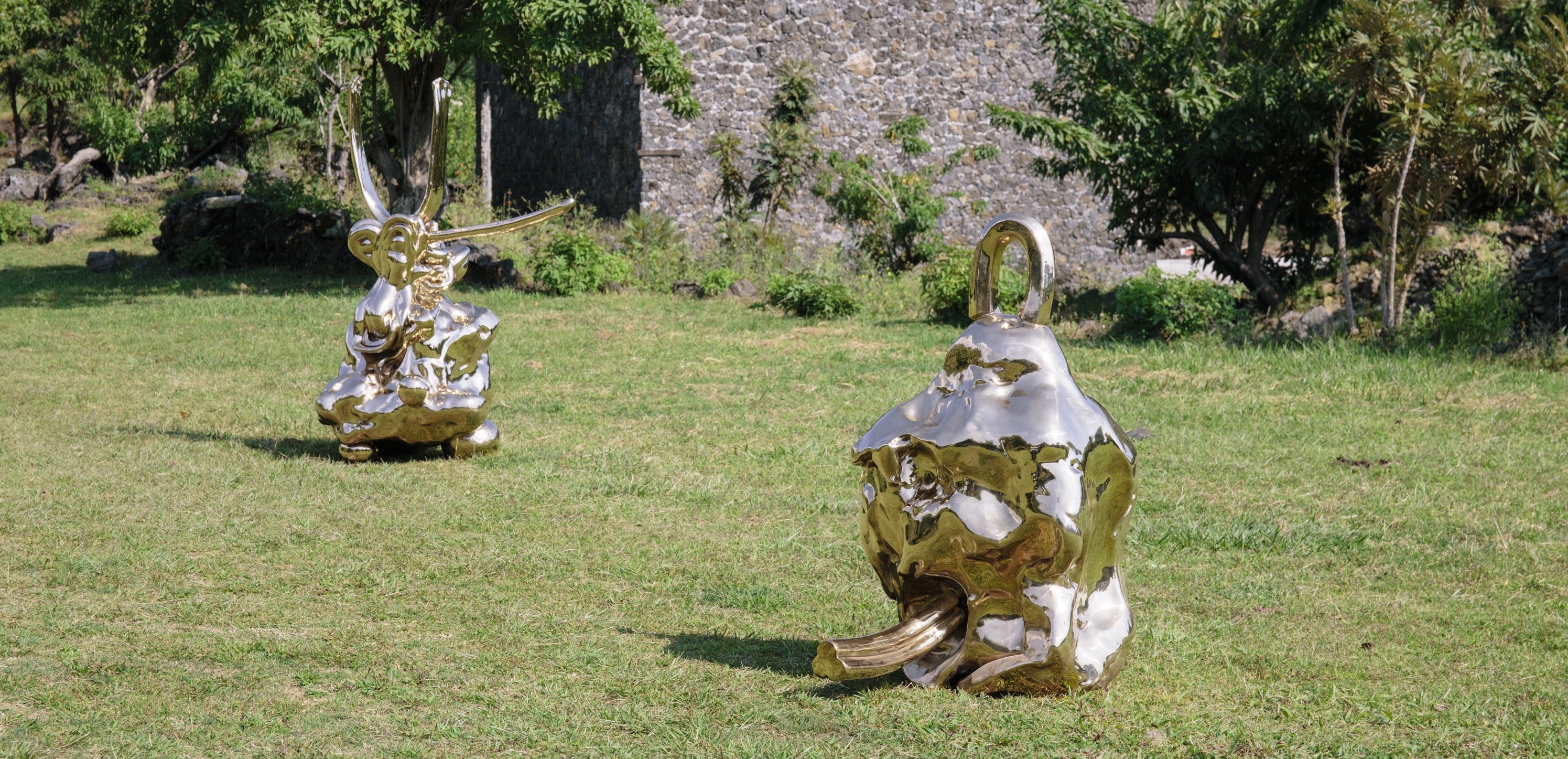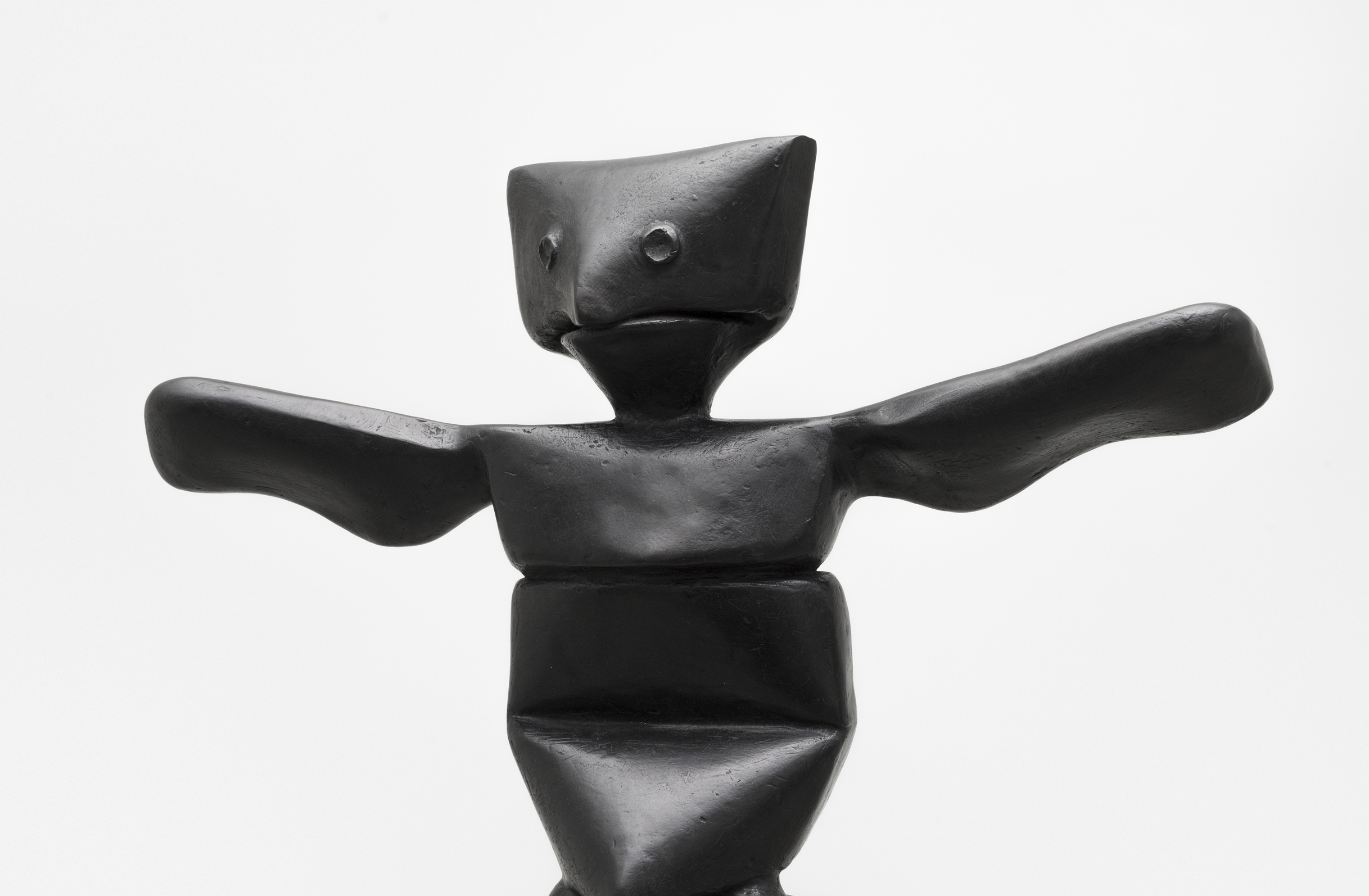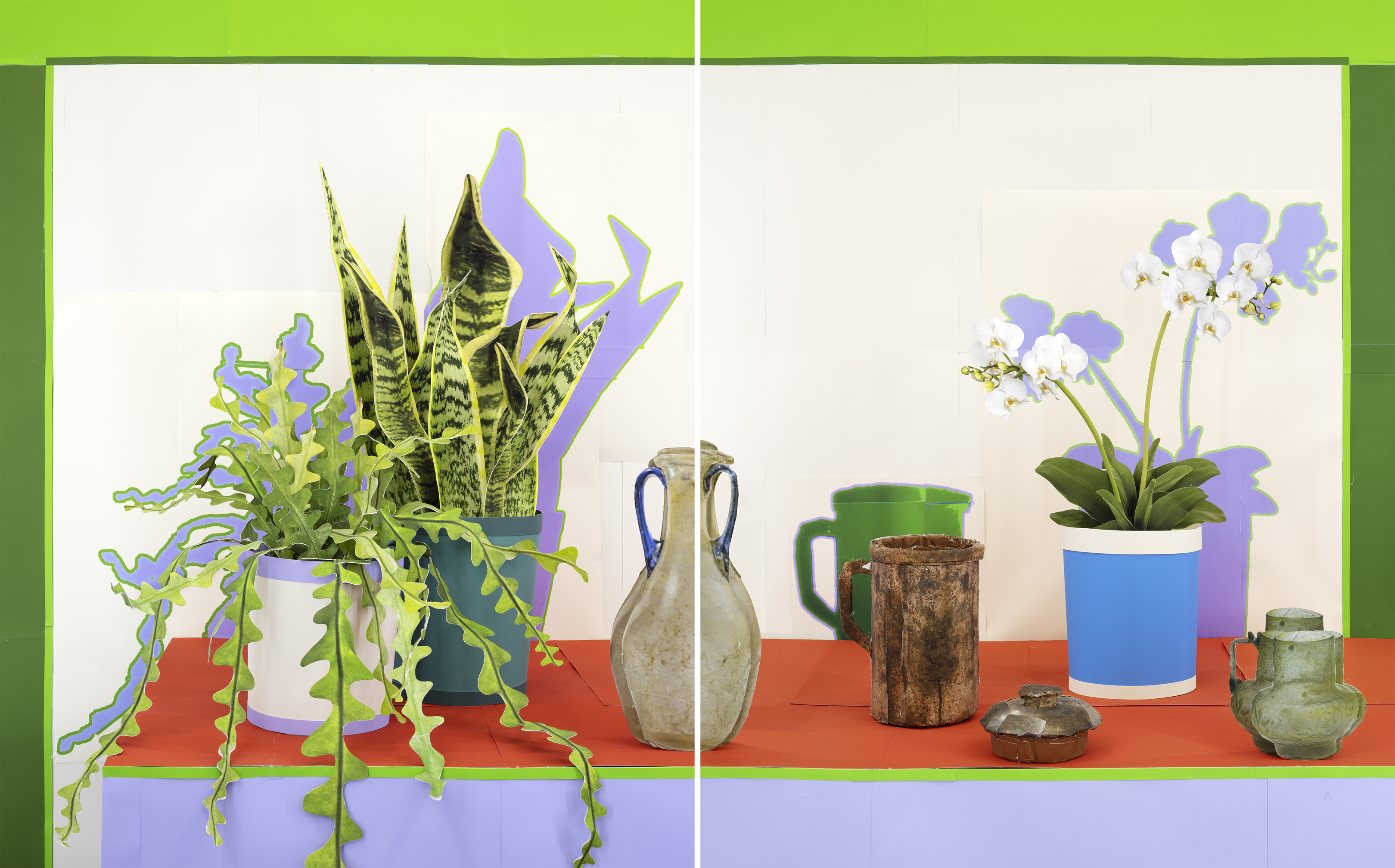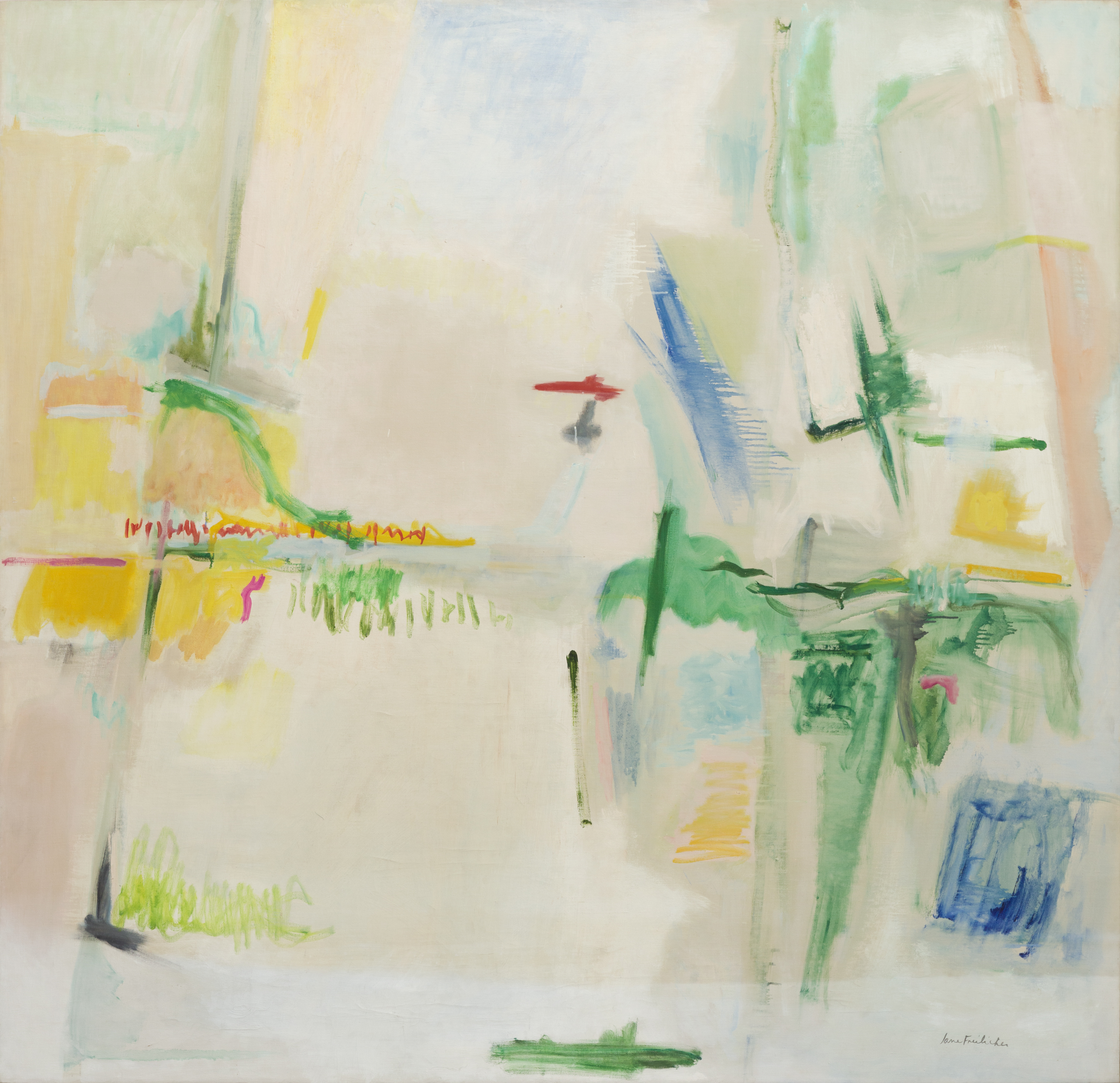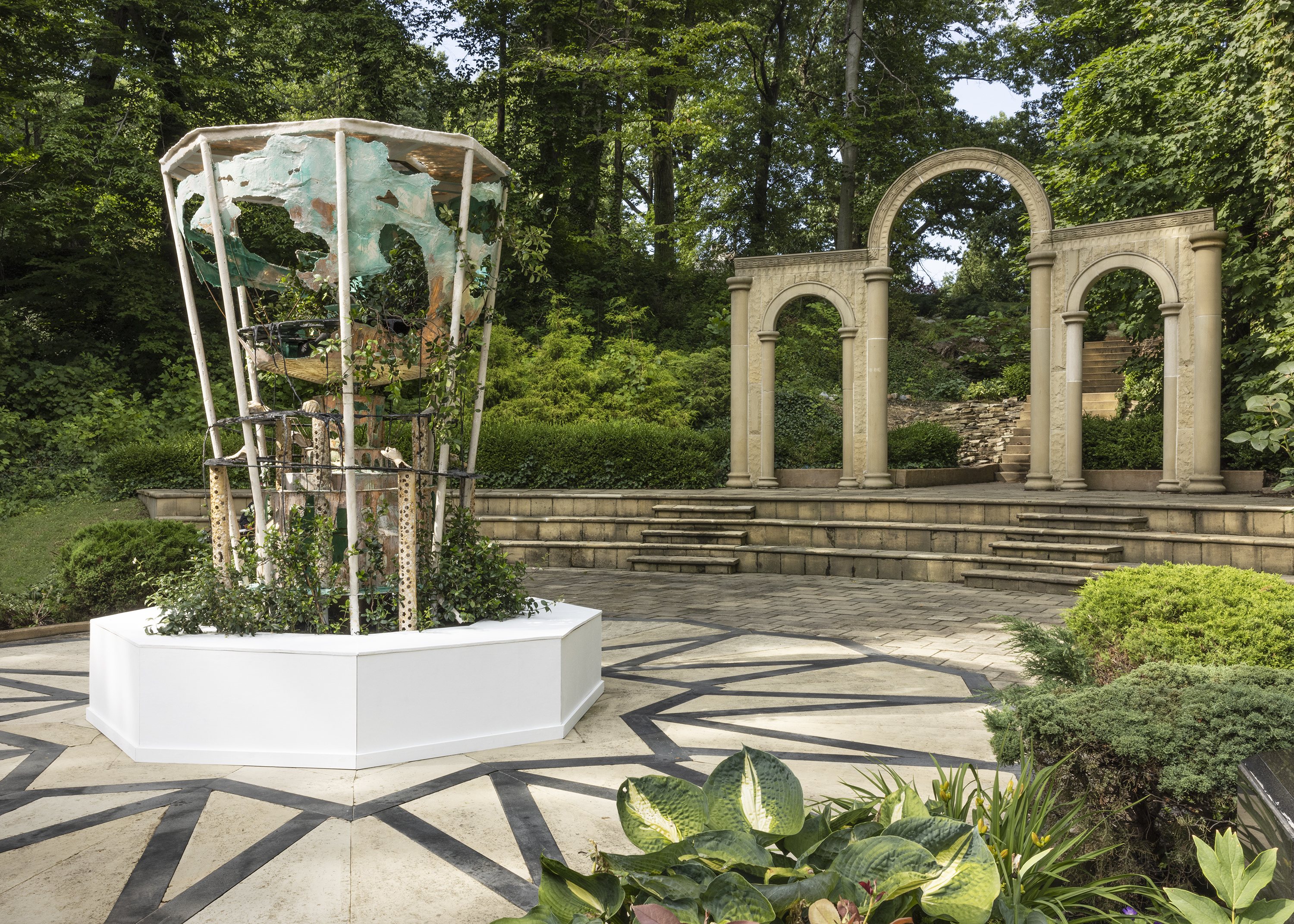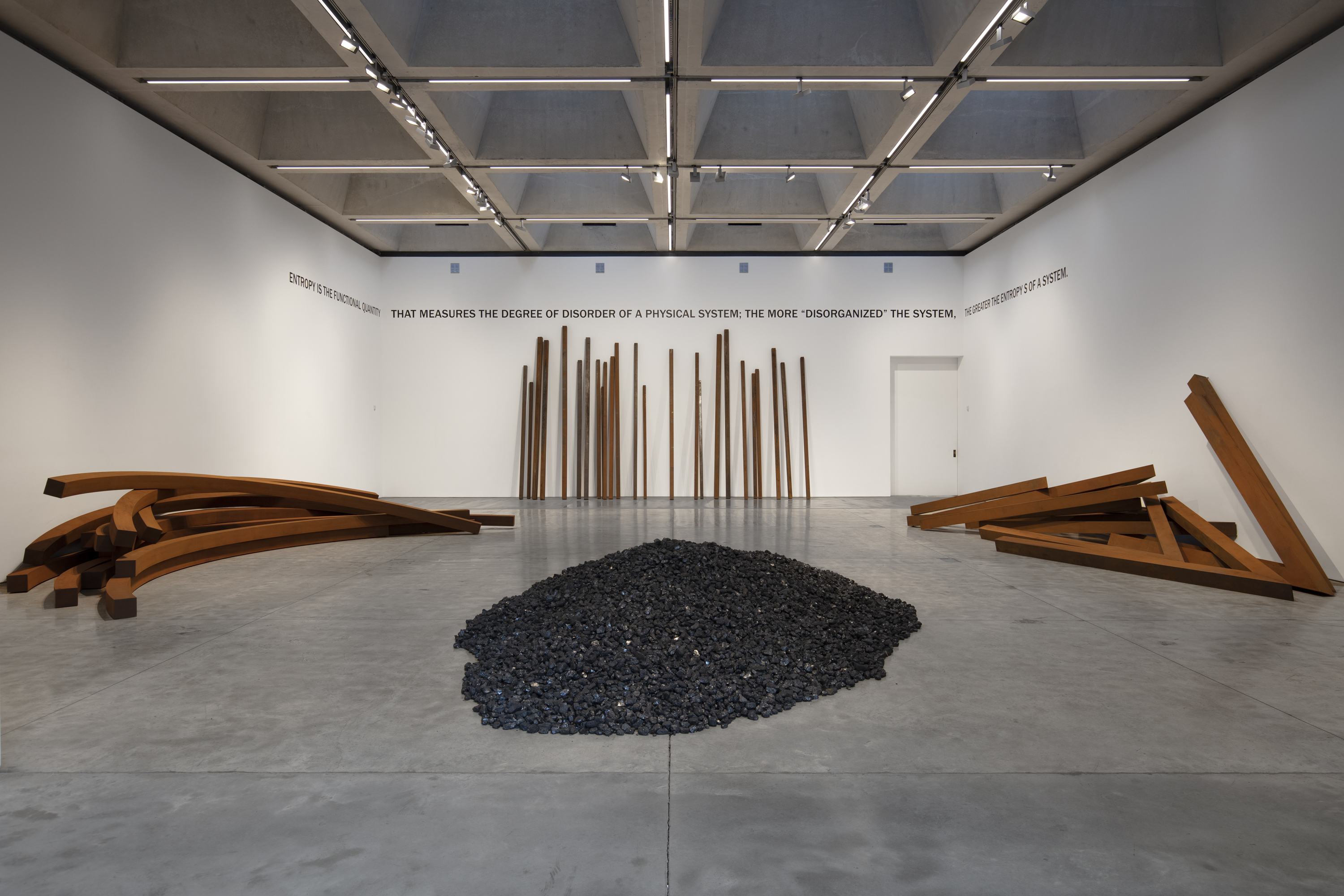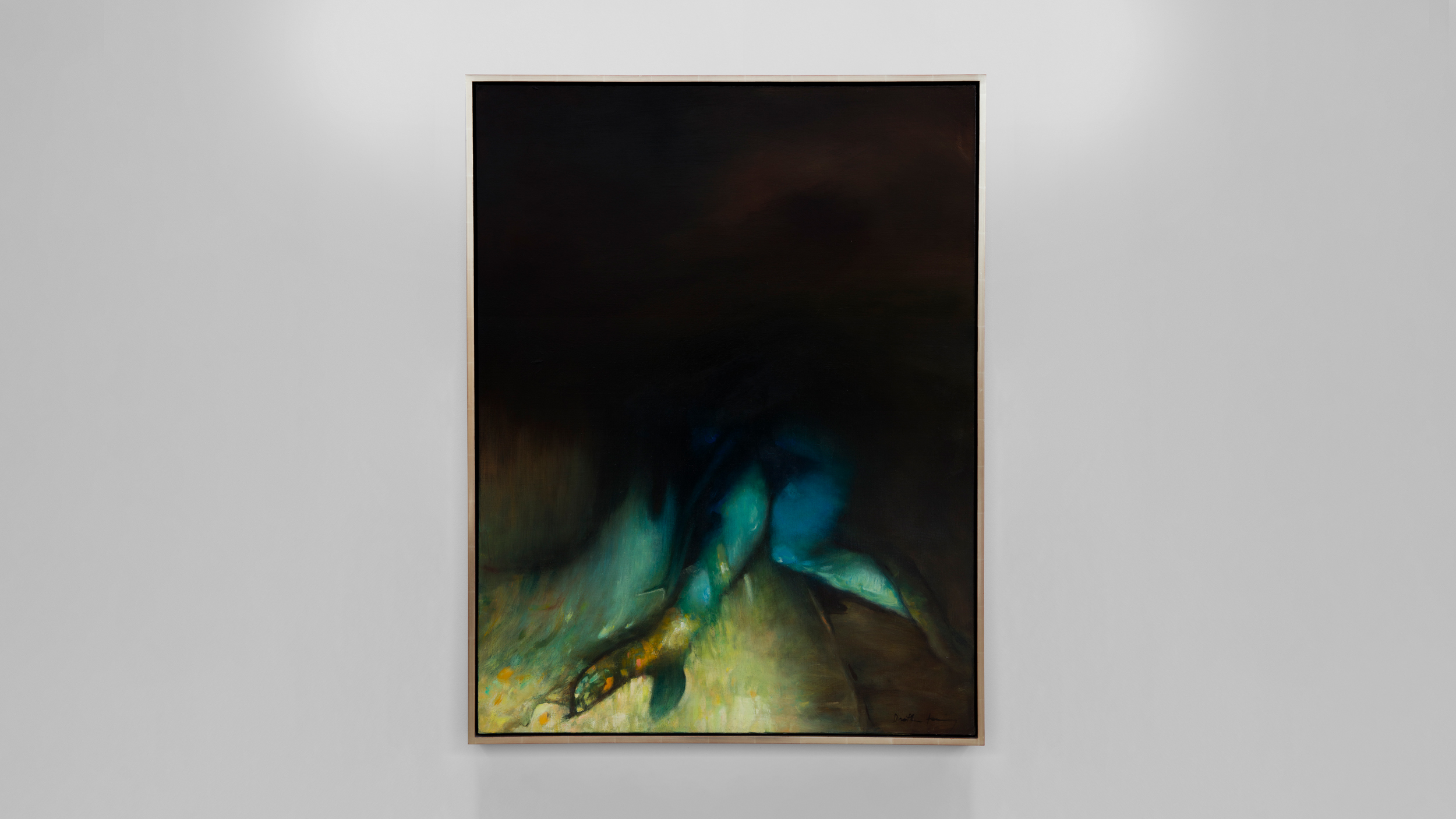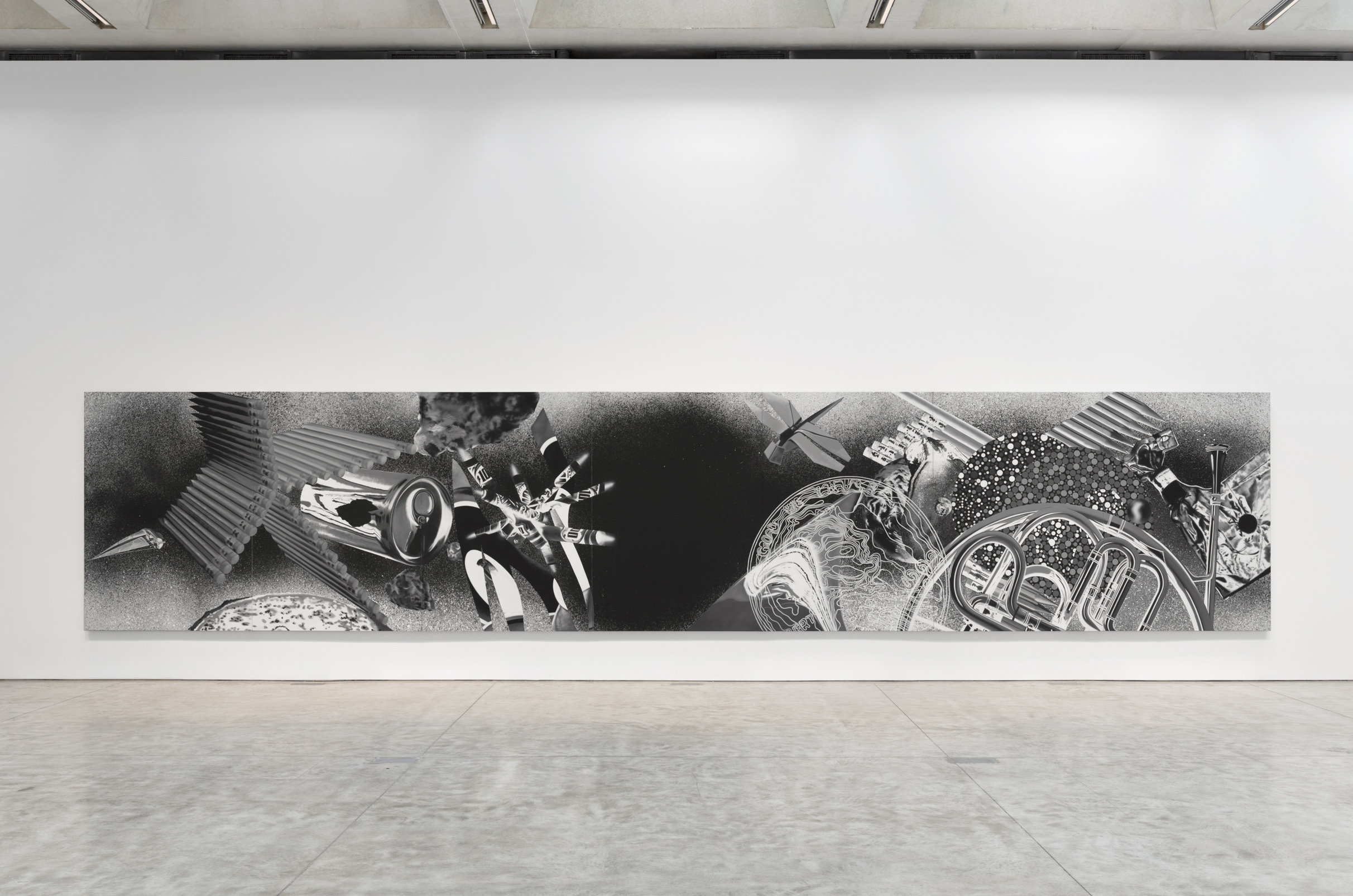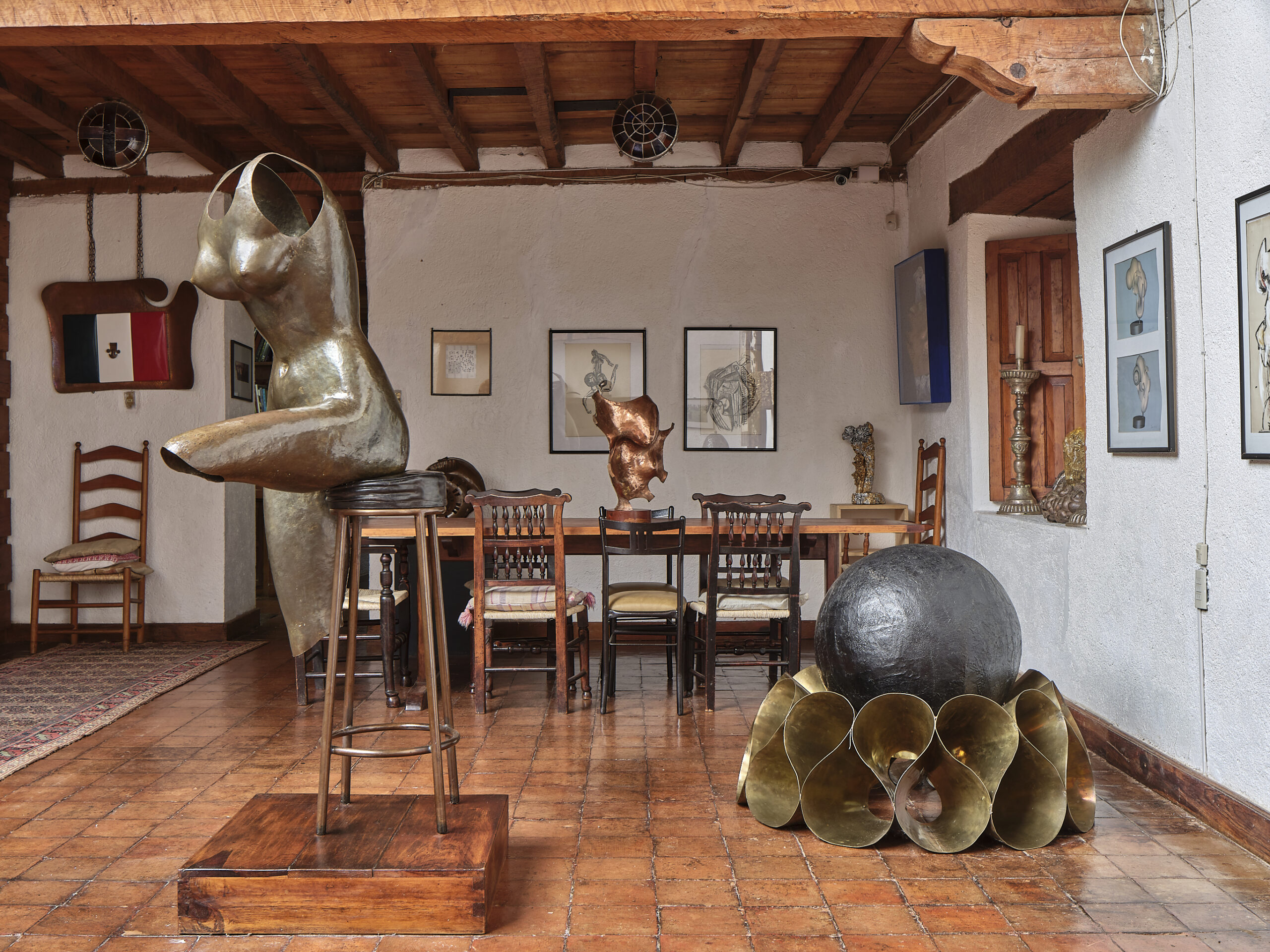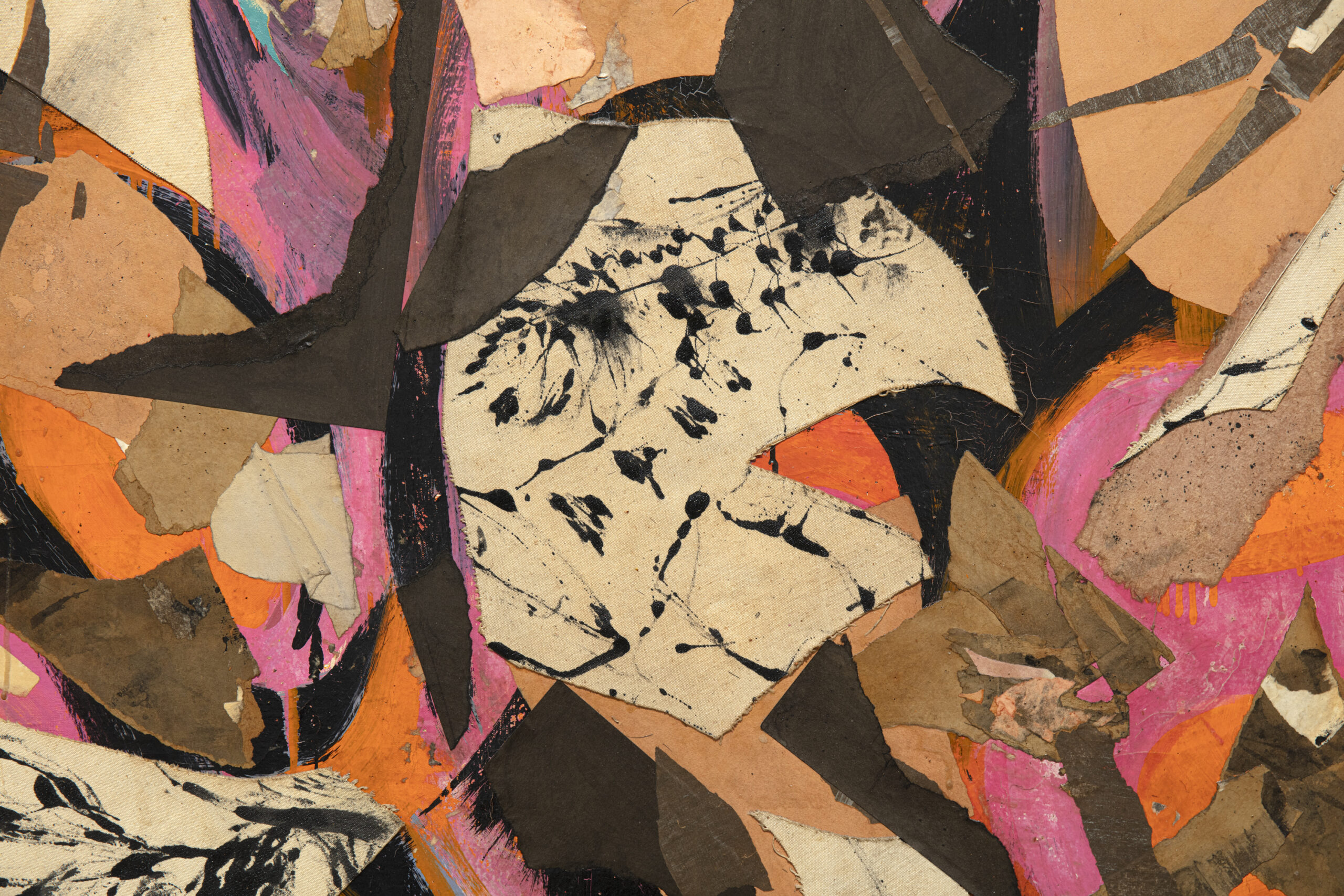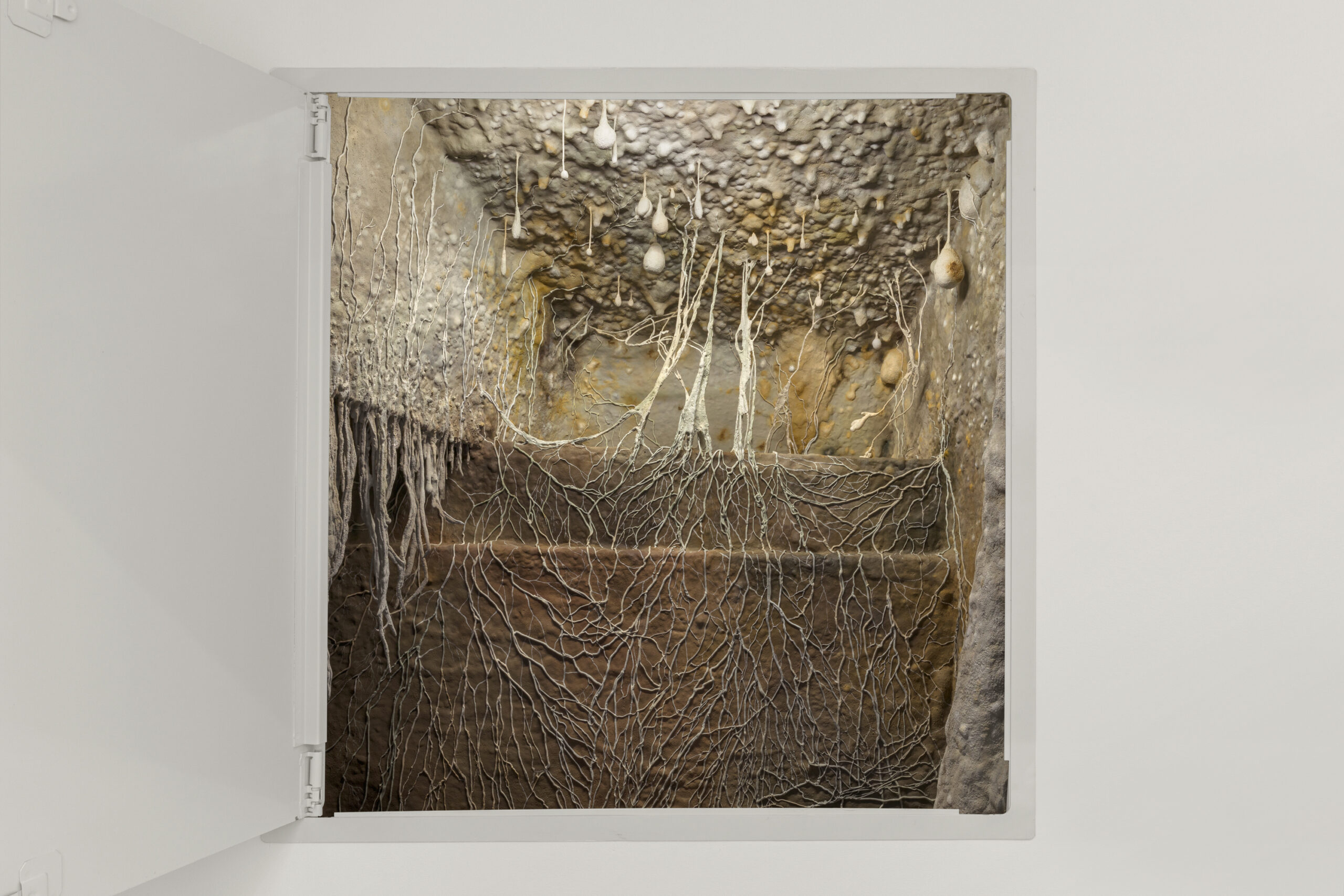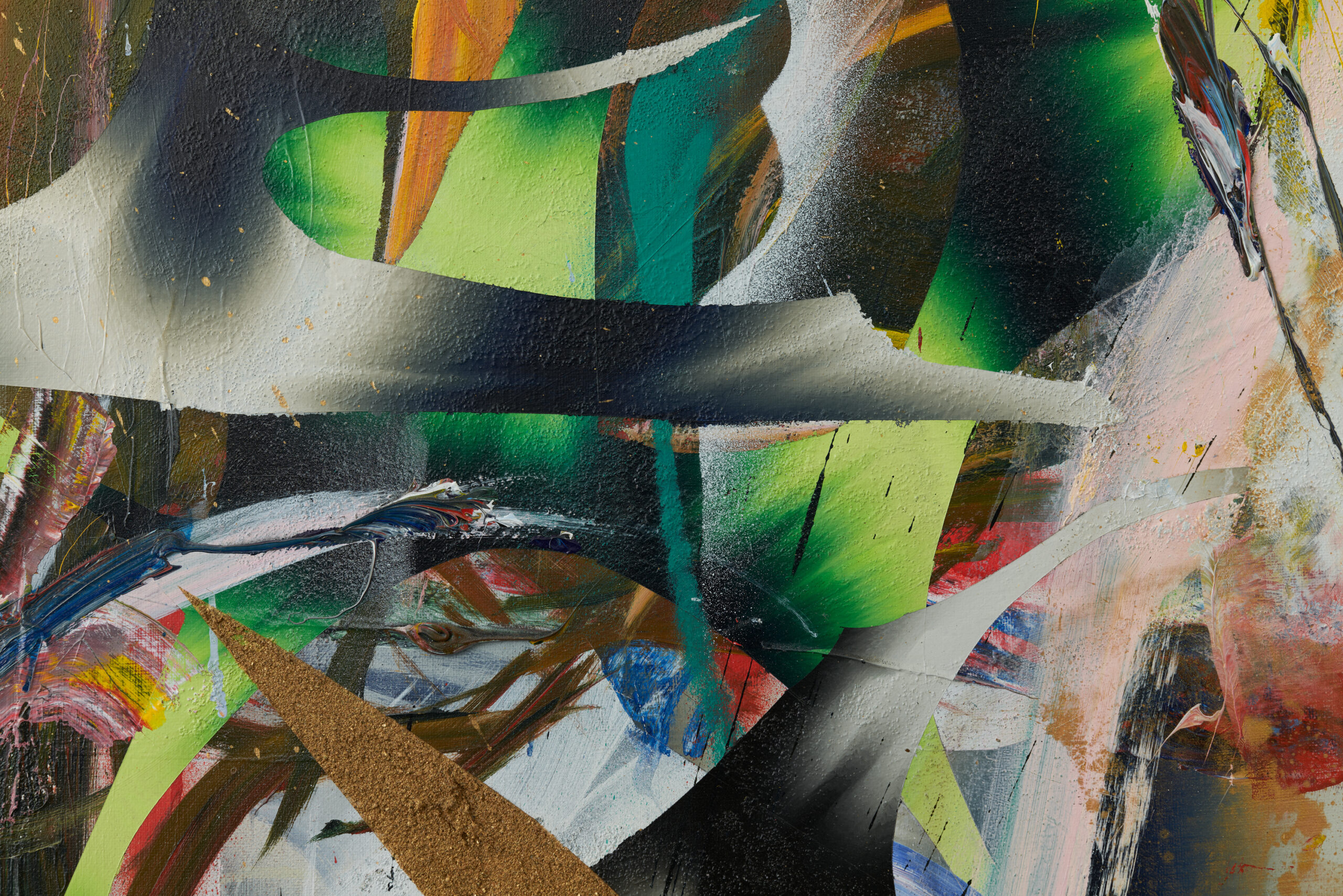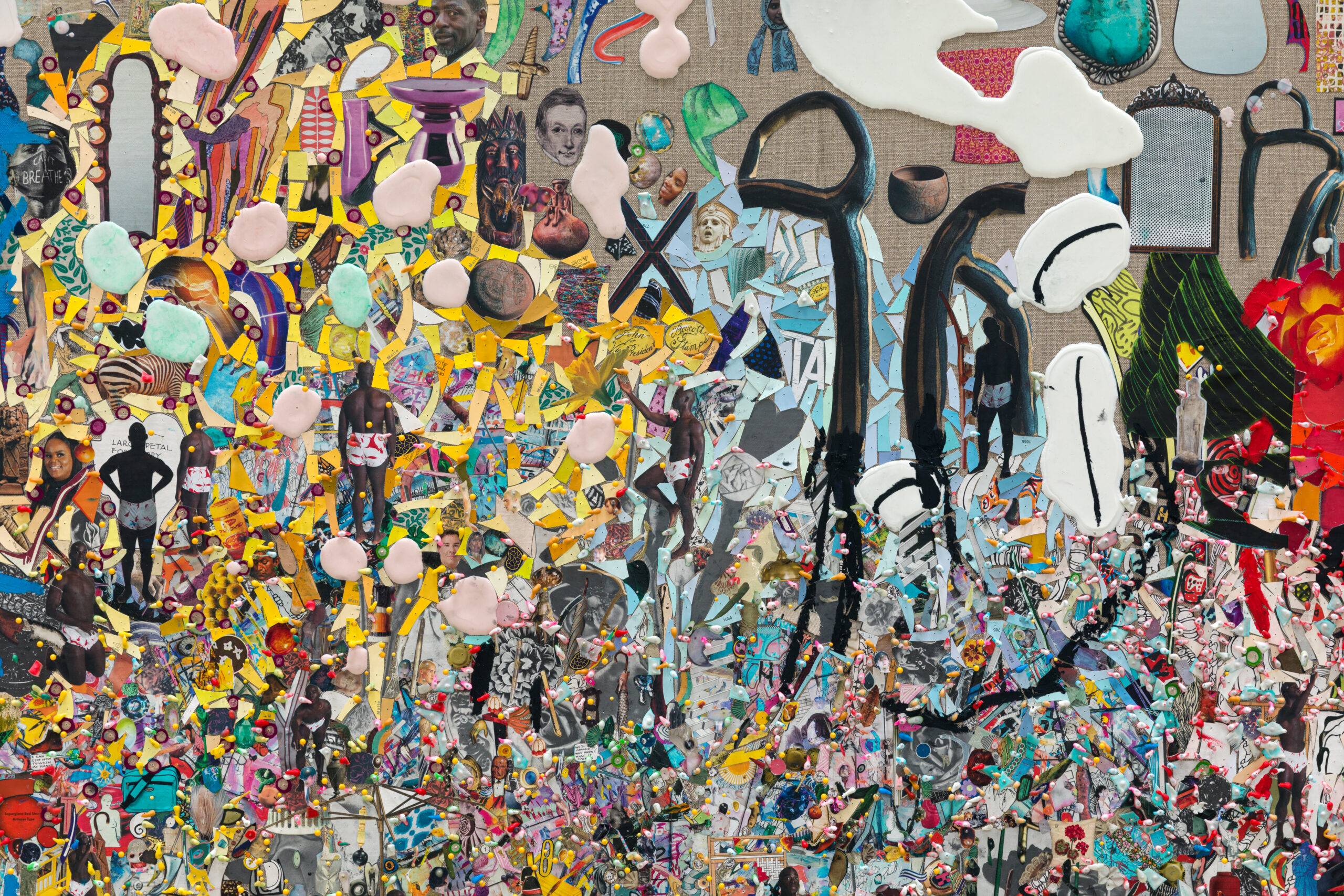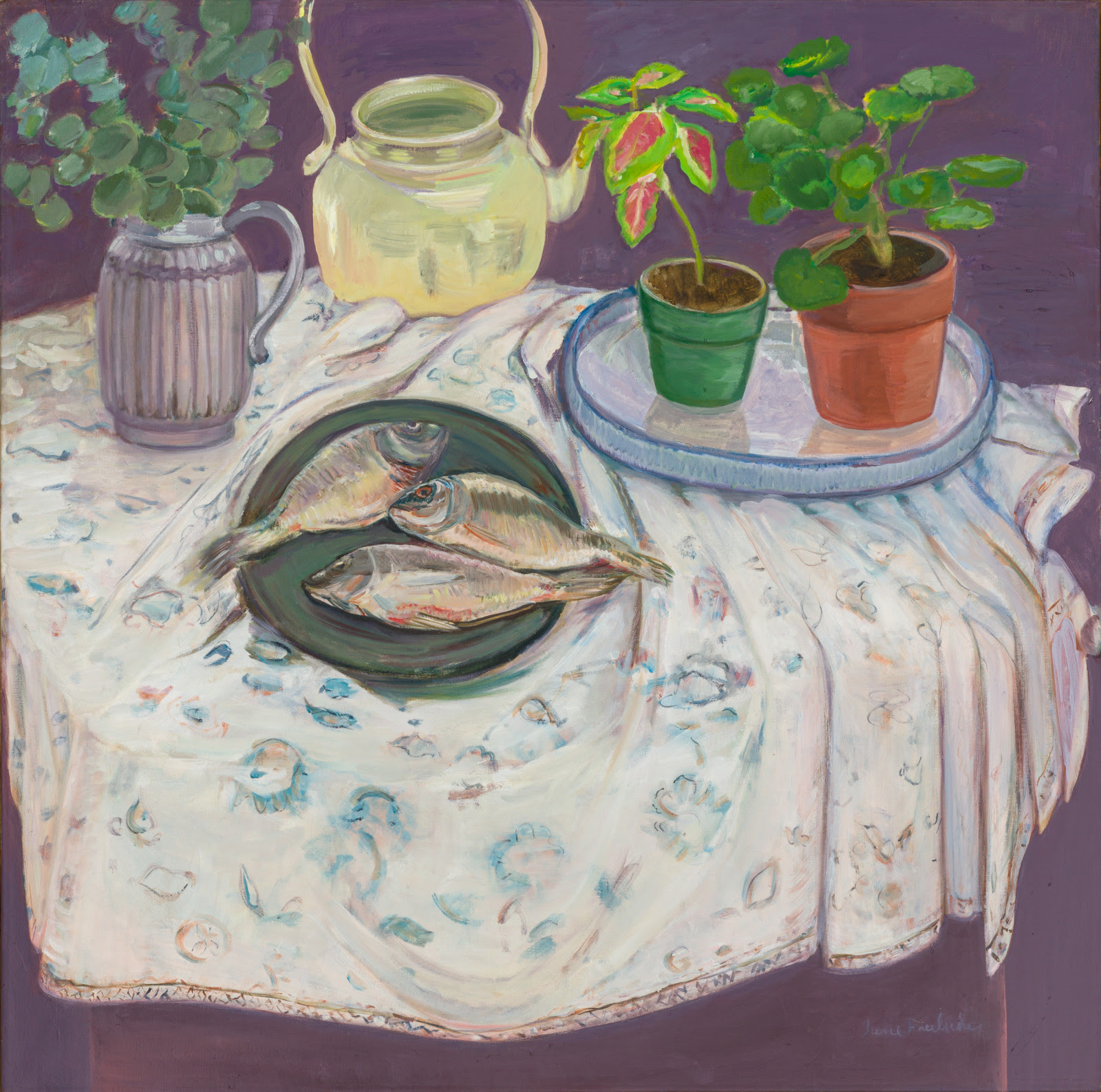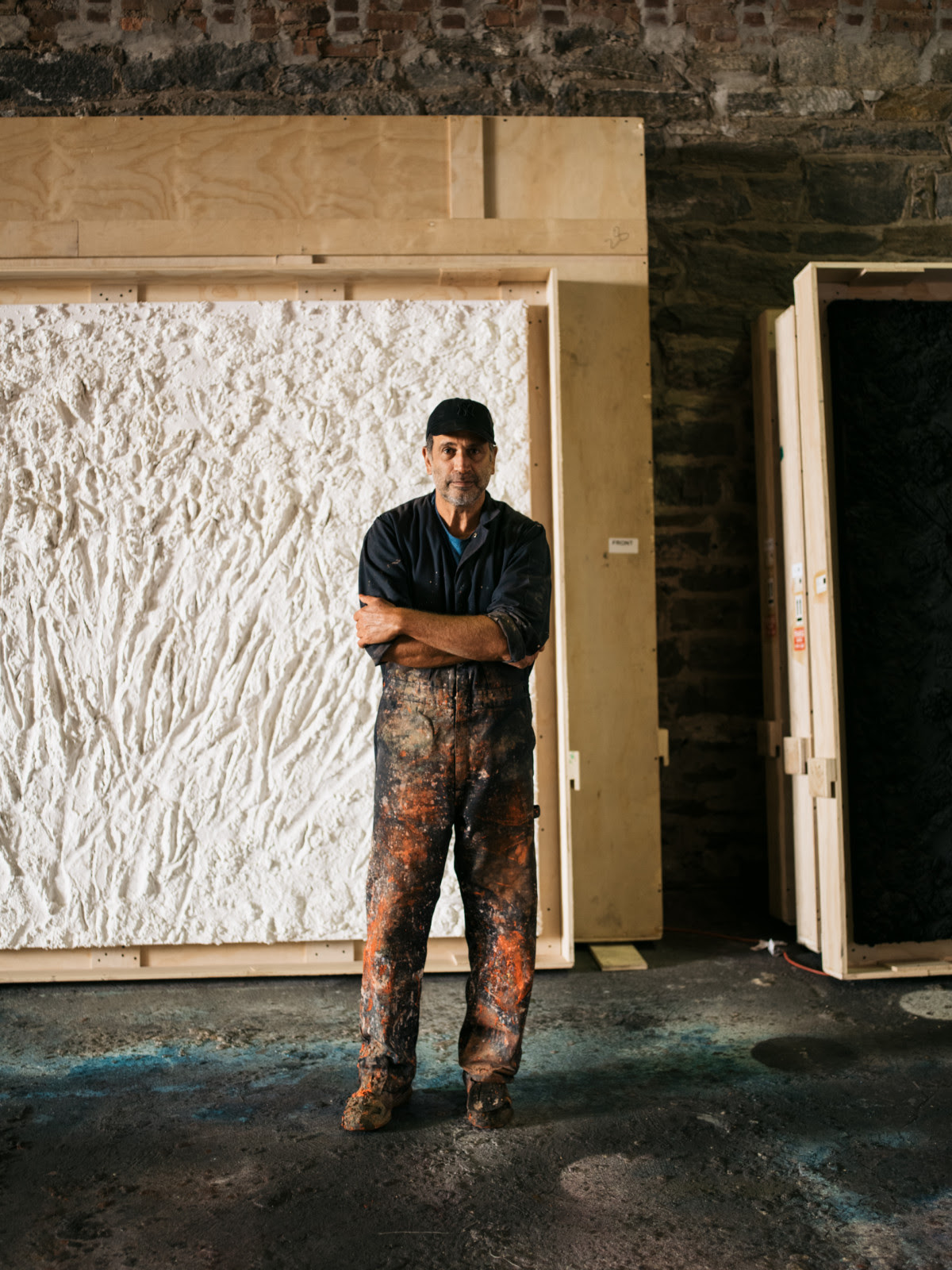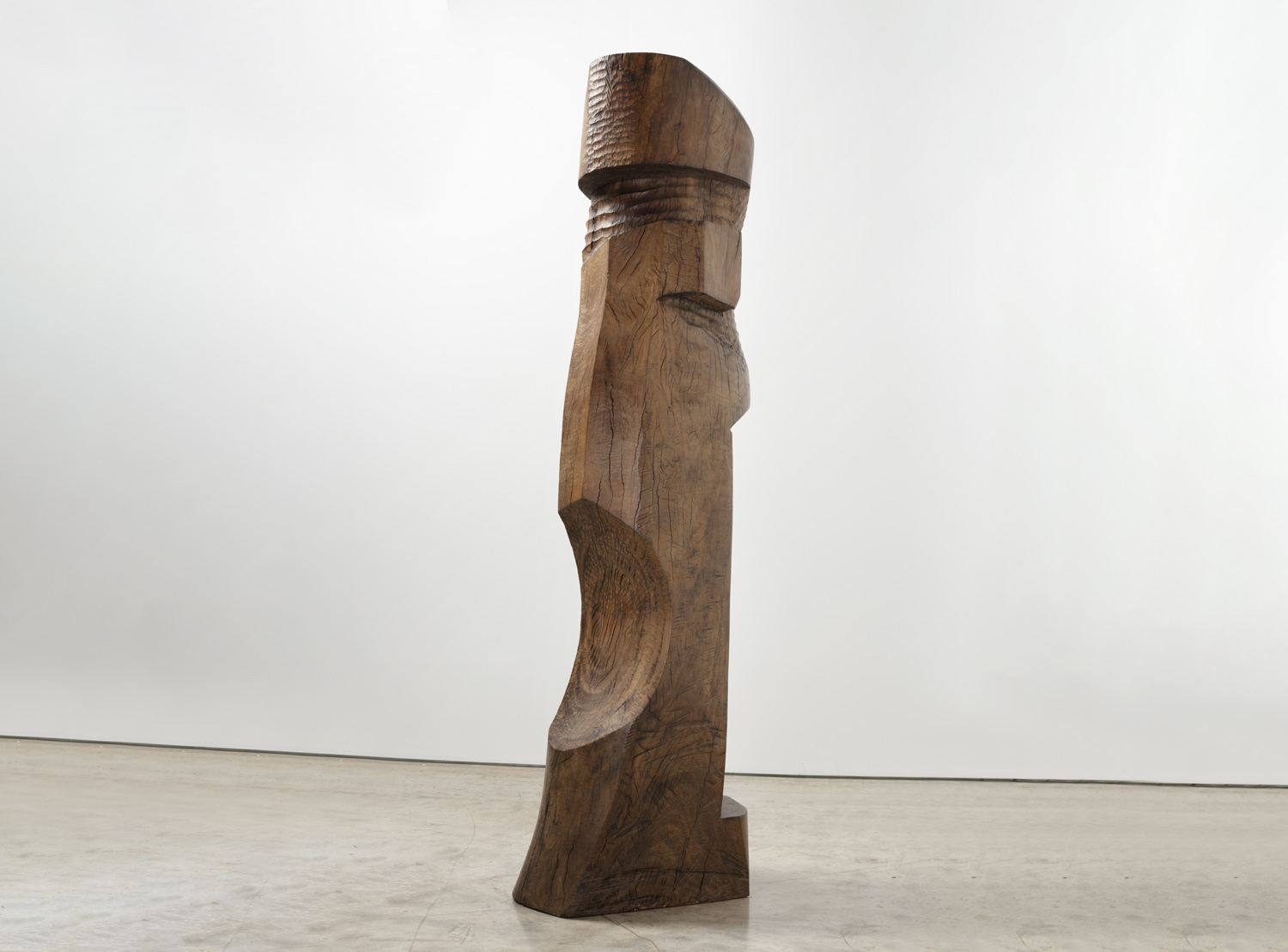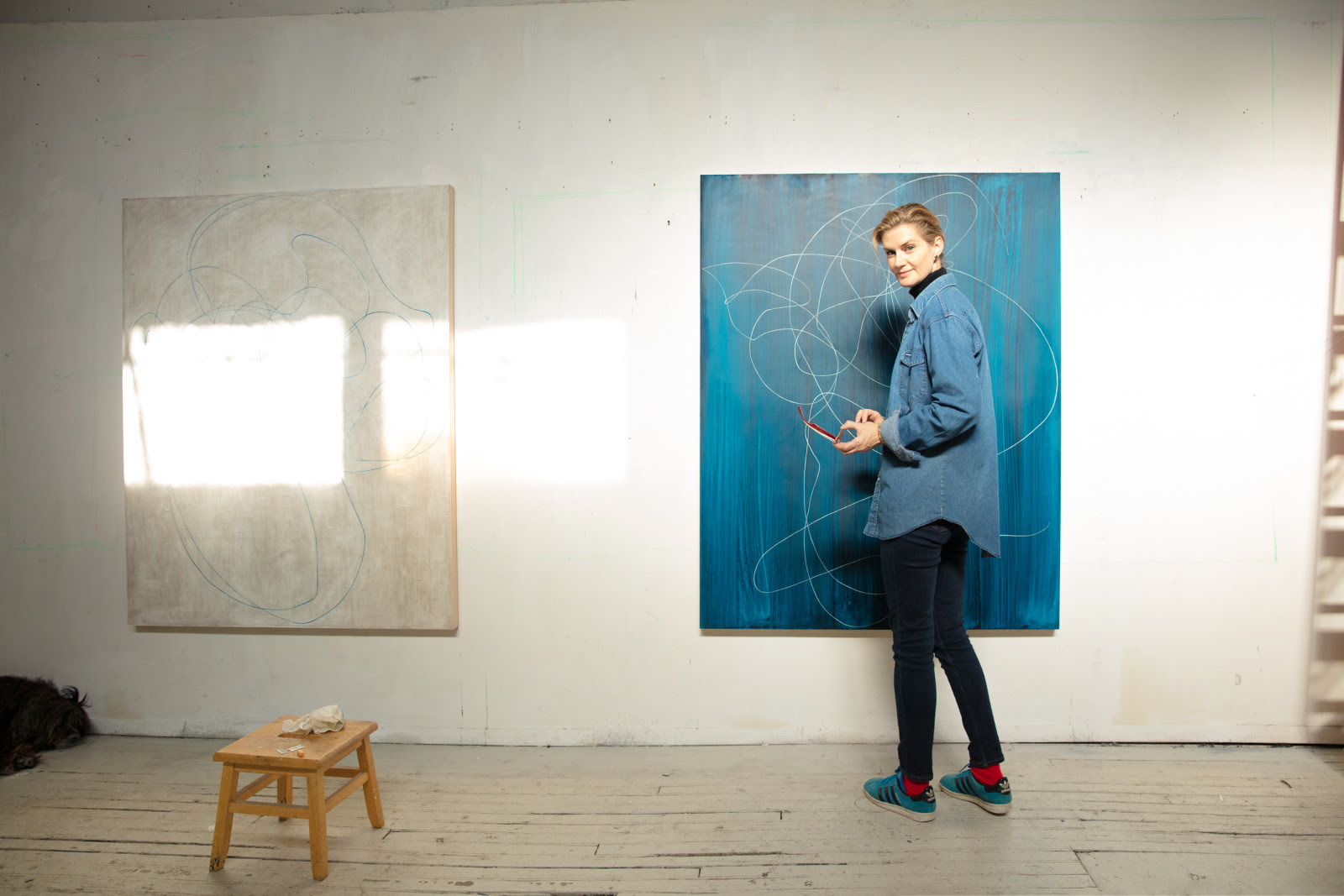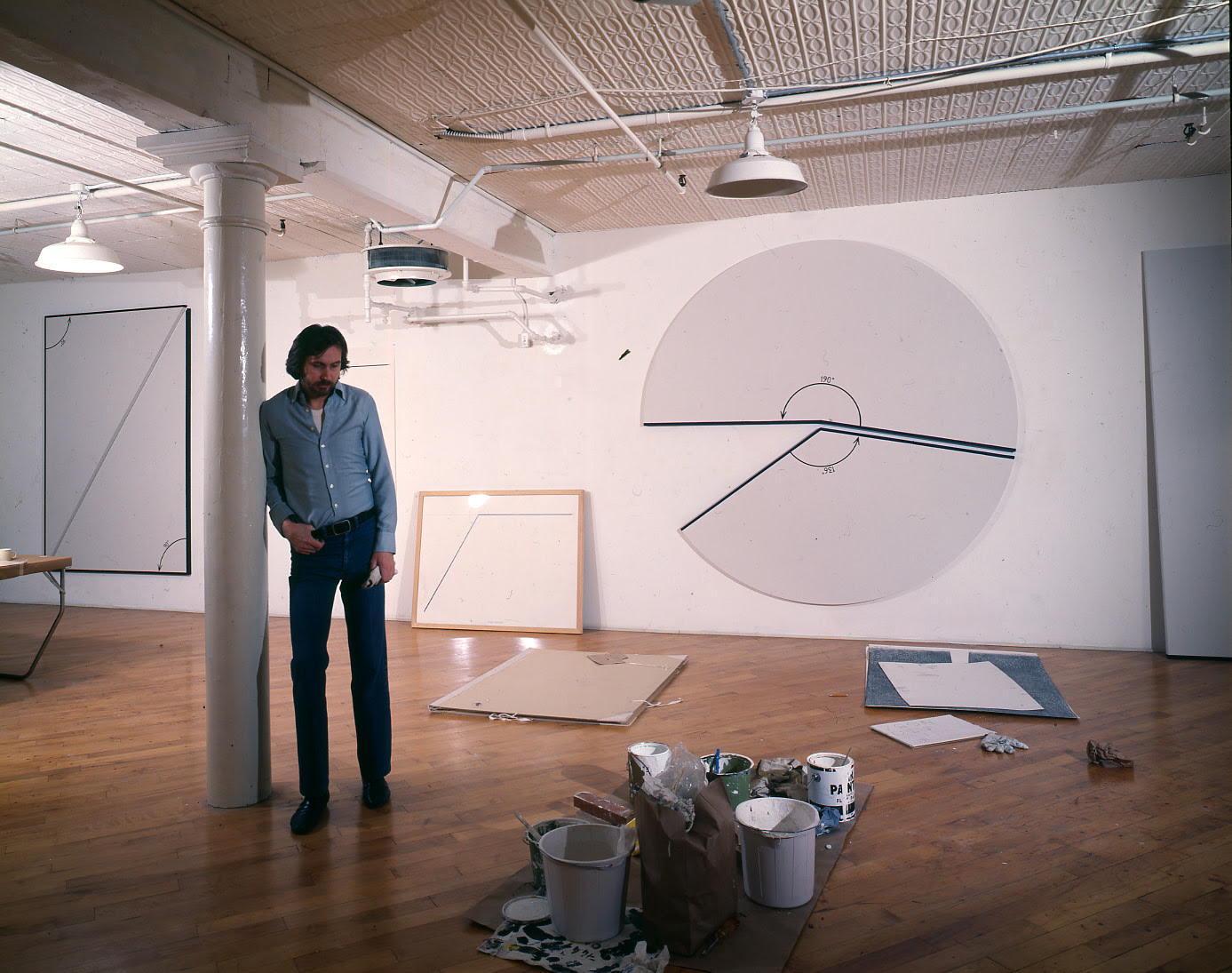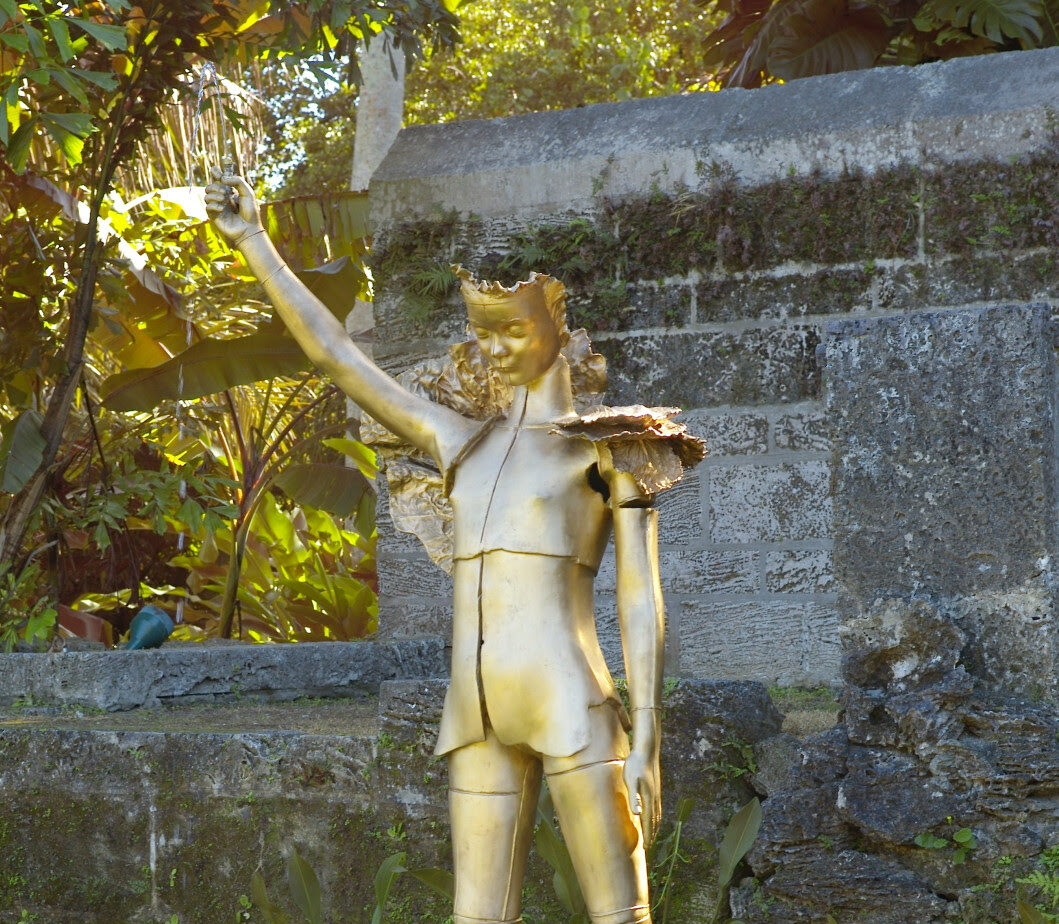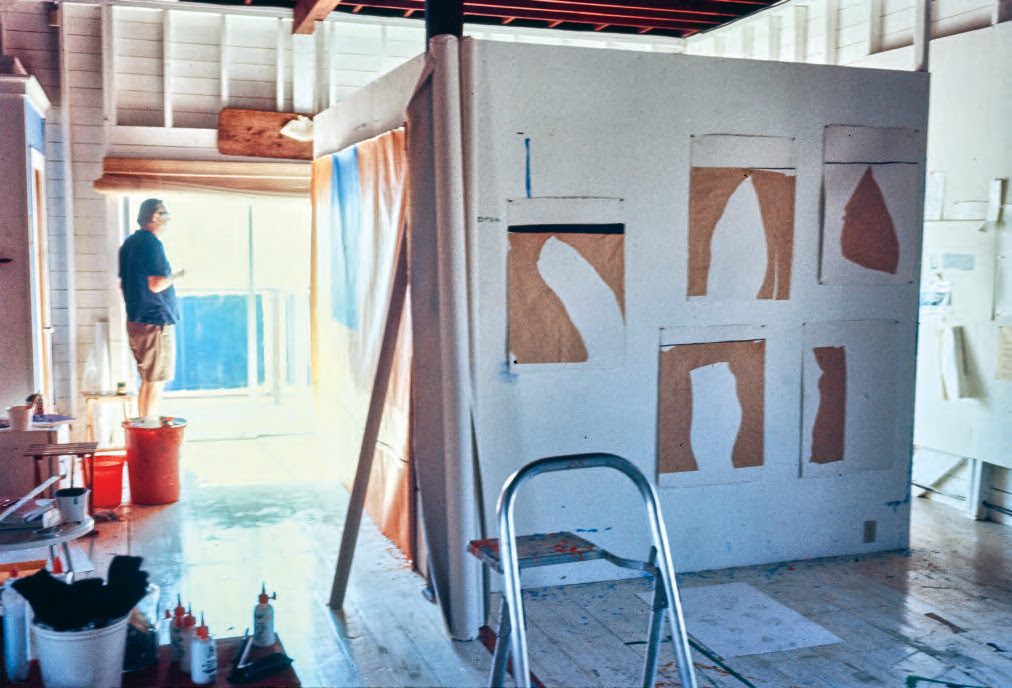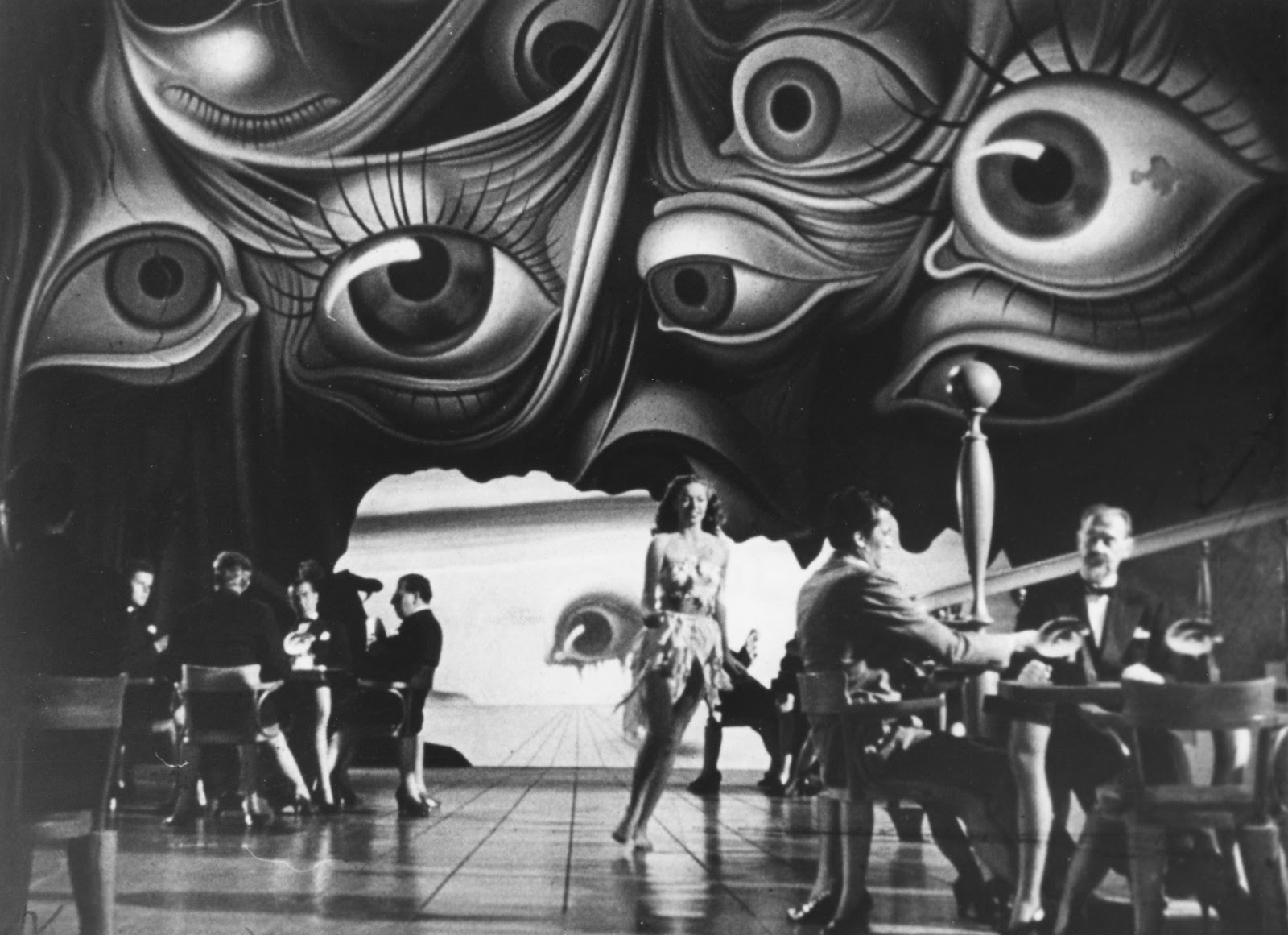On occasional Saturday mornings, Kasmin shares essays and interviews that expand critically on the work and practice of the gallery artists. To mark Bosco Sodi's newly-opened exhibition Solo Para Revivir at Kasmin, and the ongoing presentation Origen at the Harvard Art Museums, curator Mary Schneider Enriquez connected with Sodi to discuss the artist’s monochromatic paintings of fissured “landscapes” and the ways in which his sculpture engages with themes of nature, accident, and time.
“It is always by hand. For me, that is very important—the exchange of energy between me and the work.”
Mary Schneider Enriquez: It is so great to see you, I have been really excited about your new work since the exhibition at Harvard and your upcoming solo show at Kasmin. I wanted to start our conversation by going back in time. How did you begin? The very beginning, how old were you?
Bosco Sodi: Well, I think that would have been when I was between six and eight years old. I was diagnosed with a deficit of attention, hyperactivity and dyslexia. My mother, instead of medicating me, enrolled me in Montessori art classes a few times a week. I would say it was in these classes, which centered upon creation, touch, and experimentation, that I felt much freer. Those were the only moments I felt settled, working with some clay, ceramics, or paintings. I knew that I needed art as my therapy, but I never thought about making a living from art. I grew up in a family that was very close to culture. My mother loves painting, theater, classical music, and ballet. My father as well—he was always visiting museums.
When I was twenty, I got married, and we went to live in Paris. I was able to rent an apartment with two spaces, one for living and one for a small studio. When we finished the year abroad, I took the drawings I had made to the framer to give to friends back home. They were abstract, very influenced by Tàpies and Miró. When I went to pick them up, the framer told me he had many people that wanted to buy them. I didn’t know how to price them, but we did, and they sold. We were able to spend more time in Paris—that was when I realized I had the opportunity to live from art.
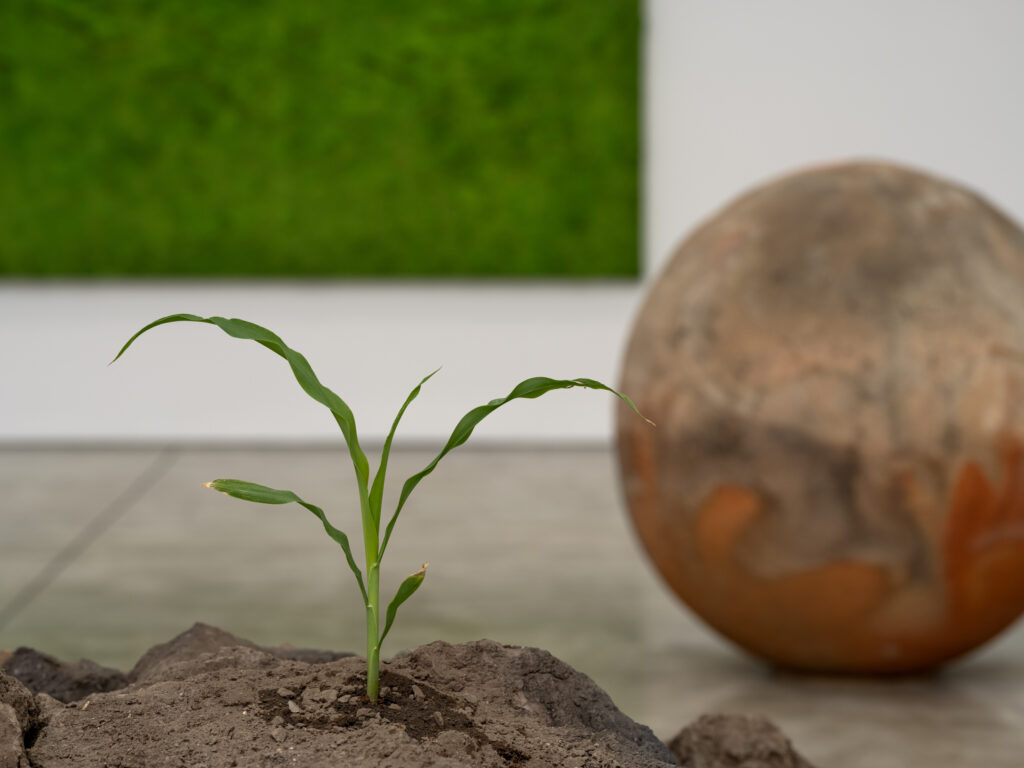
MSE: How did you make the drawings? Were they with charcoal, pencil, ink, or—
BS: With anything that I found around me, really—watercolor, charcoal. My mother still has one. After Paris we lived in Mexico for a year while my wife finished university, I was making paintings in another house studio. The next person we rented to bought them when we decided to move to Barcelona. I was twenty-eight and decided I would try to make an art career there.
MSE: From the beginning, you have used found materials as essential to your practice—
BS: Well, yes. I didn’t have so much at the time.
MSE: One of the things I find so striking about your work is its material presence—you often combine intense color with those that are more rustic and natural, seemingly organic. In a sense, there is a corpuscular nature to everything you create.
BS: Yes, I love the two concepts, both the power of color but also the intensity and the energy of the matter itself. It is also part of my creative process in a way, my father was a chemical engineer, so we grew up having experiments all the time in the house. Ultimately, I am interested in the essence of things. The materiality of life that comes from evolution. I am not religious, but I believe in energy.
Another thing that used to influence me a lot when I was young is that my mother used to bring us to archaeological sites. It is one of the reasons I decided to build the studio here in Greece. At first I was unsure of what to do—I had canvases ready, but I did not want to do the same work I was doing in New York. I began collecting pieces of driftwood on walks, going to the beach or the mountains, and began encrusting them.
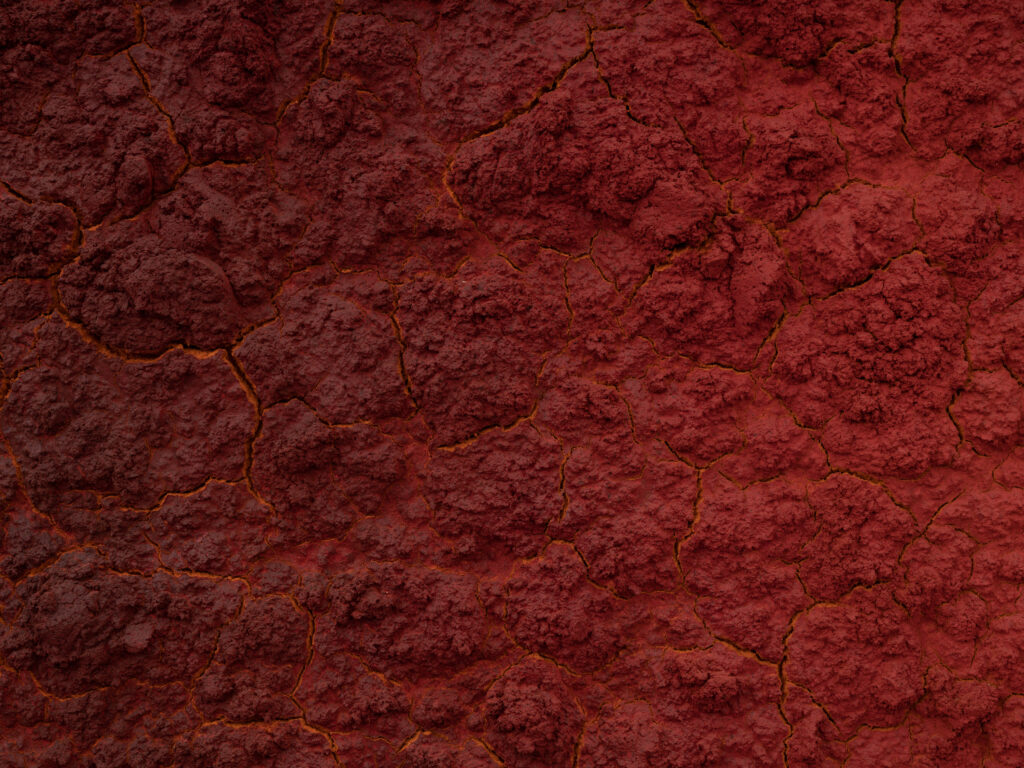
MSE: They appear totally primordial.
BS: Exactly. Some of them are painted, others are left natural. The thing is that when you experiment, you are always open for an accident—new things come. Right now, I find it very interesting that these works carry the essence of the island in a way. Even in the paintings. It is very humid and very dark where I work, so the material palpability changes. Even the way in which pigment is absorbed. The mixture requires a lot of sawdust here—these paintings here have much more texture than the ones I have made in New York, Berlin, or Mexico. The cracking takes much longer, it has a much different rhythm. When I paint in a dry climate, the cracking is very chaotic. The accident is altered.
“I work until I see the first crack, then I stop and let it go by itself. Whatever the outcome.”
MSE: Almost volcanic. How do you choose the colors you focus on? I know that this is central to your upcoming exhibition at Kasmin, namely red, green, black, and purple.
BS: I wanted to show the elements of life, to create a universe inside the gallery. For me, black and purple represent the sky, and red is earth, the fire inside of it.
MSE: That leads me to another work that will be represented in the show, which ties back to Tabula Rasa at Washington Square Park in 2021.
BS: Yes, that was developed initially during the pandemic, because I love gardening. Albert, my son, we do a lot of gardening. My father too. I realized that whatever disaster was occurring during lockdown, plants were still growing. It was very nice to see that life was still going on. I thought why not make a work that carries lives—I made these small raw clay spheres that we put a corn seed in. The work invited people to bring them home. It involved community.
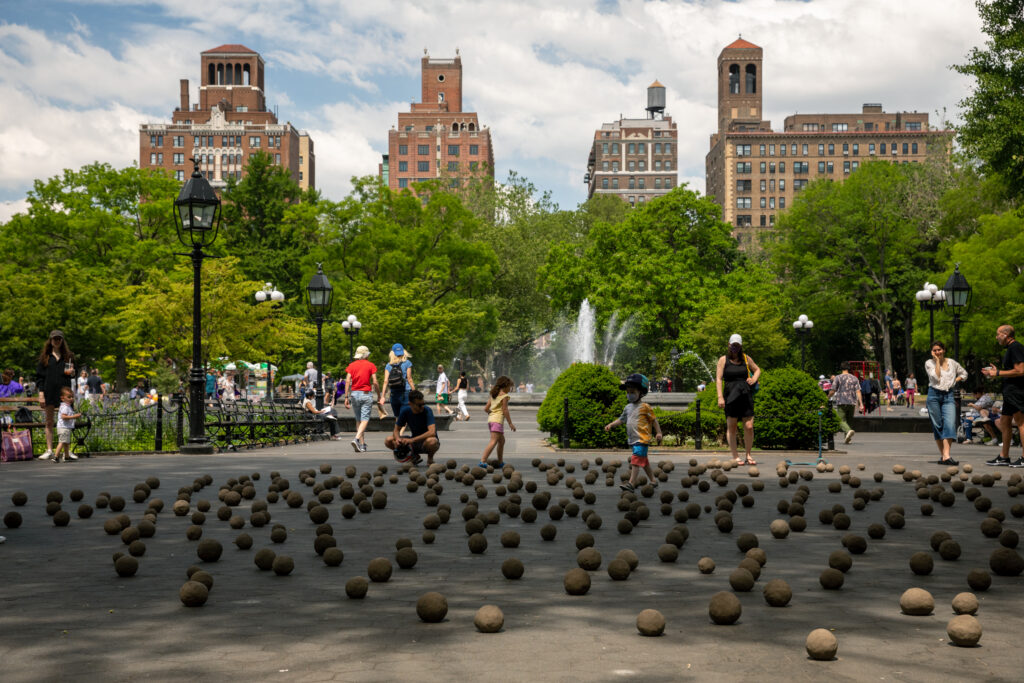
MSE: Let’s take a step towards Oaxaca for a minute, because it is all coming out of there. You began creating these bricks in an area of Mexico where you built an extraordinary house and studio and site for both community and for artists—Casa Wabi. How did you start working with the local artisans to build the bricks?
BS: One of the first residents to go to Casa Wabi was Corban Walker. When he came back to New York, he told me “you have to bring your kids,” because there are a lot of clay craftsmen that do bricks and he told me “your kids are going love them.” When we did, I began to make a small cube, 1 x 1 x 1 foot. Corban said it was impossible because it was too solid; it was going to break. It was too heavy and needs a lot of time to dry. He was right, and so after I hired craftsmen to work with me in the studio. We began to experiment for one year doing different types of cubes that were always breaking. But I learned the concept of challenging the material and of uncertainty.
One of the most interesting things about my art is the uncertainty. You never know how it is going to look the next day, or what will be the outcome. We began to experiment, and after two years we had the first cube. I remember I woke up very early in the morning. We cooked the first one, and I knew it was a beautiful object with a lot of energy. For one whole year they were breaking, and we learned the process until we got the first one. Then when we did bigger ones, we changed to rectangular forms, that one is at the Dallas Museum of Art. And then the spheres.
MSE: How big are the rectangles?
BS: The biggest one was 120 x 80 x 80 inches. Two tons of clay.
MSE: Wow.
BS: It is much more difficult to do the spheres. But I also love geometry in a way.
MSE: You were sculpting these by hand to start.
BS: It is always by hand. For me, that is very important—the exchange of energy between me and the works.
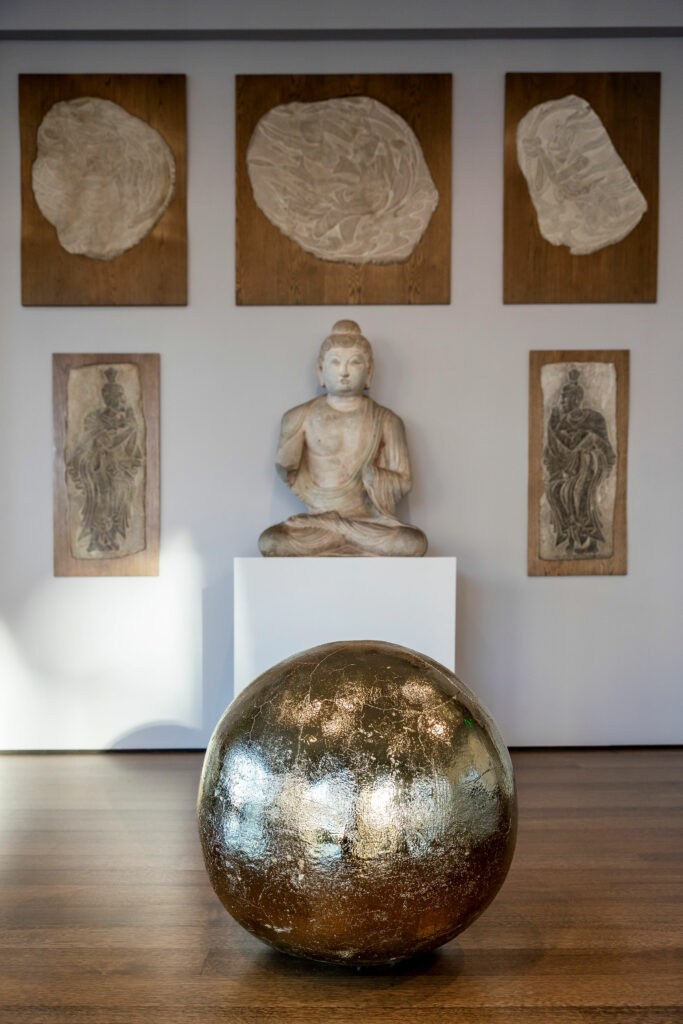
MSE: I want to go back to nature again, because we are very much ingrained in that. One of the influences you talked to me about when we did the Harvard installation of spheres in the Buddha Gallery was of Japanese culture. Not only is Casa Wabi designed by Tadao Ando, but you have had a historic link to Japan from early on. Can you talk about that?
BS: When I was very young, I read about wabi sabi philosophy, or aesthetic philosophy. Some people call it that. It talks about how the accident—the non-control, the passing of time—makes things irreplaceable and unique. I really love that concept, not just in my work, but across my own life. That life is unrepeatable. Time is continuous. In 2004, I got a very important residency in Japan, and I fell in love with the country, the concept of aesthetics, everything. I have tried to implement a lot of that aesthetic into my works, which is this respect for nature, but also for accident. For causality. For uniqueness.
MSE: What I like about your work is that it gives you this feeling of warmth, or a feeling of humanity, a feeling of friendship. Connection.
BS: I love that. Yes, it is not rarefied, untouchable or antiseptic. It is the opposite. It is about being together.
MSE: But let’s take that a step further, because it is an interesting contrast that I think also epitomizes your practice. The spheres that you created with gold, for example, have a rare kind of aura about them. You have said that the color suggests a kind of holiness, if you consider the history of gold. When the gold sphere is placed in front of us, as it was at Harvard in front of the Buddha sculpture, you get this wonderful contrast between perfection and imperfection. How did you decide on that pairing of objects?
BS: As always, to create dialogue—to put things in a context so that they can look like they belonged there since the beginning. For example, if you found yourself in a cave somewhere in China and came across a sculpture of Buddha for the first time alongside a golden sphere, you would think that it was meant to be. Adding a small layer of something precious can completely change the context. Both are objects of adoration.
MSE: On a related but different note, you have these different studios and these different places you live. In each case you connect to your community as well. You just opened a new studio and exhibition space in Mexico City. Do each of these places give you a different resonance? And is there a reason you feed off the energy of each different site?
BS: Well, I love to be in constant movement. I am not a person that can stay in one single place. I have learned over the years that I have to be changing in a way. I do not want to be comfortable because otherwise the concept of challenge goes away. Some places are for ceramics, others for painting.
MSE: Right. So, each of these locations is a different kind of creative process in a sense for you?
BS: Yes, in a sense, yes.
MSE: As I think about monumentality, have you ever created a full wall? I mean, muralism was obviously essential to the history of Mexico.
BS: One of the most important paintings in my career was a piece I created in six panels. Each was 4 x 12 meters and covered the whole length of the gallery. It was beautiful, and a breakthrough in my career—a blue painting that is now owned by the Jumex Foundation.
MSE: I know that your pieces respond to the environment in which you work, and that there can be several phases to how you complete them. How do you know when something is finished?
BS: I do them in a single shot. I work until I see the first crack, then I stop and let it go by itself. Whatever the outcome.
MSE: Then, in a sense, nature is talking to you.
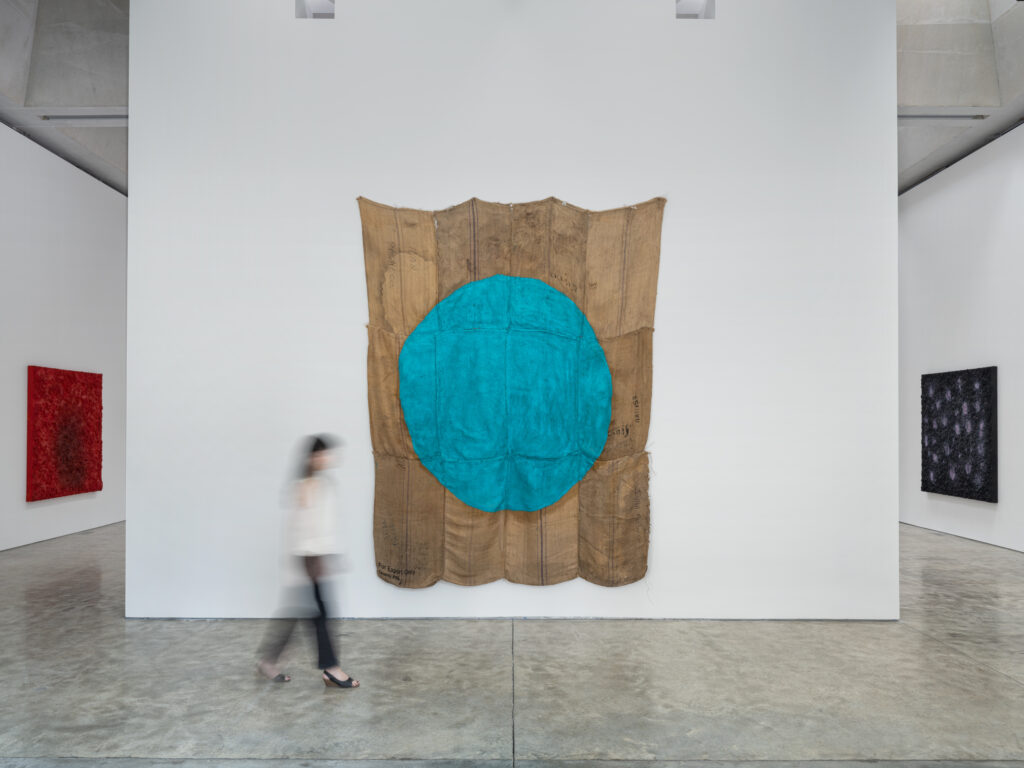
Mary Schneider Enriquez is a renowned art historian and is the former Houghton Curator of Modern and Contemporary Art at the Harvard Art Museums, where she organized the exhibition Bosco Sodi: Origen, on view through June 9, 2024. In 2020–21, she curated Krzysztof Wodiczko: The Portrait, and she was co-curator of Crossing Lines, Constructing Home: Displacement and Belonging in Contemporary Art in 2019–20. She has curated the Harvard Art Museums exhibitions Doris Salcedo: The Materiality of Mourning and wrote the accompanying catalogue published by Yale University Press (2016–17); Mark Rothko’s Harvard Murals (2014–15); and directed the commission and permanent installation of sculpture by artist Carlos Amorales. As an independent curator, she co-curated Geometric Abstraction: Latin American Art from the Patricia Phelps de Cisneros Collection (2001) and Matta: Making the Invisible Visible at the McMullen Museum at Boston College (2004). She received her Bachelor of Arts and Doctorate in the History of Art and Architecture at Harvard.
Bosco Sodi (b. Mexico City, Mexico, 1970) lives and works in Brooklyn, New York and Oaxaca, Mexico. He is known for his use of raw, natural materials to create large-scale textured paintings and objects. He has exhibited his work internationally and throughout the United States, including What Goes Around Comes Around organized by the Fondazione dell’Albero d’Oro at the Palazzo Vendramin Grimani in Venice, Italy and Básico at the University of South Florida Contemporary Art Museum in Tampa (both 2022). In 2021, Sodi opened a major sculpture show in the garden at Dallas Museum of Art, and completed his second public installation, Tabula Rasa, in Washington Square Park. Other notable institutional exhibitions include ergo sum, Centro de Arte Contemporáneo de Málaga, Spain (2020); Por los siglos de los siglos, Museo Nacional de Arte, Mexico City (2017); Museum of Stones, The Noguchi Museum, New York (2015); and Pangea, The Bronx Museum, New York (2010).
In 2022, Sodi founded Assembly, a nonprofit exhibition venue in Monticello, New York. In 2013, he founded Fundación Casa Wabi near Puerto Escondido, Oaxaca, Mexico, an arts center dedicated to promoting cultural exchange between international contemporary artists and local communities. Designed by the Japanese architect Tadao Ando, the foundation’s headquarters hosts artist residencies and exhibitions, among other initiatives. His work is in significant public and private collections worldwide including the Jumex Foundation, Mexico; Contemporary Art Foundation, Japan; Harvard Art Museums, Cambridge, Massachusetts; Nasher Sculpture Center, Dallas; The Phillips Collection, Washington, D.C.; Walker Art Center, Minneapolis; Wadsworth Atheneum Museum of Art, Hartford, Connecticut; New Orleans Museum of Art, Louisiana; and Museum of Contemporary Art, San Diego, among others.
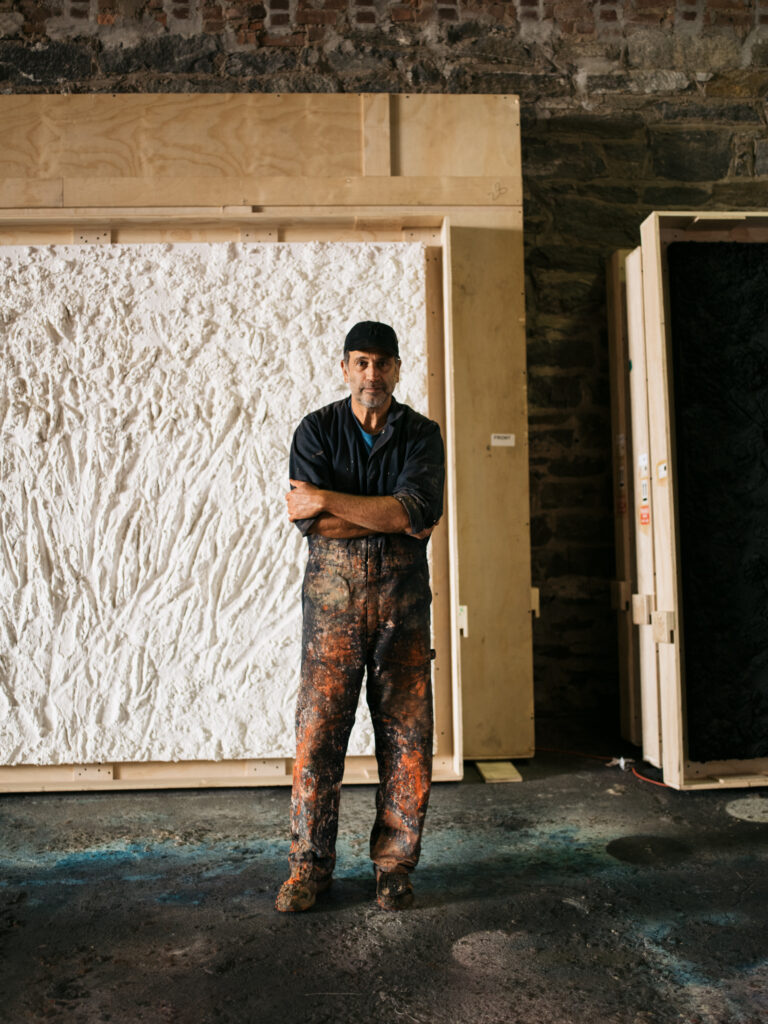
This conversation took place in July 2023 via video call, with Sodi speaking from his studio in Greece. The transcript has been edited for length and clarity.
Image: Bosco Sodi’s hand after applying gold leaf to a clay sphere. Photo: Courtesy Studio Bosco Sodi.

